All reports
Sickle cell
·
Jan 23, 2025
Understanding sickle cell disease: a guide for patients
An essential guide to sickle cell disease: understanding what it is, treatment options and steps towards empowerment and hope
Reports are in beta and continually improving. They are not a substitute for professional medical advice. Please contact us to give feedback.
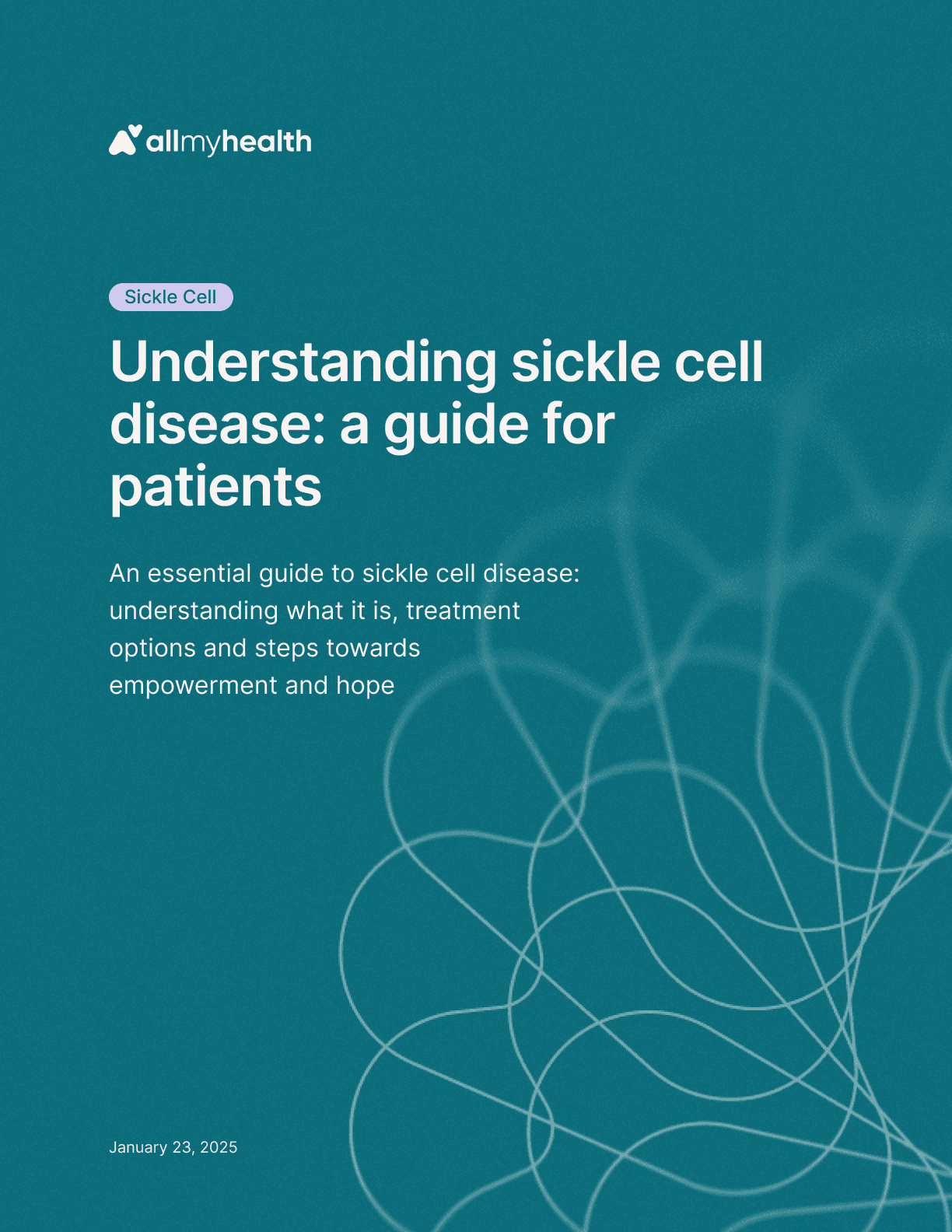
Stay informed
This report was published in our weekly newsletter and on our community page. Follow to stay up to date with the latest news and research relevant to your condition.
Listen to the audio version
Introduction
Sickle cell disease is a group of inherited blood disorders. It affects the shape of red blood cells, which carry oxygen to all parts of the body. Healthy red blood cells are round and flexible, allowing them to move easily through blood vessels. In sickle cell disease, some red blood cells become hard, sticky, and shaped like the letter C or a sickle, a farm tool. These sickle-shaped cells can block blood flow in small blood vessels, leading to episodes of severe pain known as vaso-occlusive crises, as well as organ damage, and other serious problems [1].
This guide aims to provide you with a clear and easy-to-understand overview of sickle cell disease, including its causes, symptoms, and treatments. We will also break down common medical terms associated with the condition and offer advice on how to live with sickle cell disease.
What is Sickle Cell Disease?
Sickle cell disease is an inherited blood disorder that affects red blood cells. It is caused by a mutation in the gene that tells the body how to make hemoglobin, the protein in red blood cells that carries oxygen. This mutation leads to the production of abnormal hemoglobin called hemoglobin S, which causes red blood cells to become stiff, sticky, and sickle-shaped [4].
To understand this better, imagine that your red blood cells are like boats carrying oxygen throughout your body. In sickle cell disease, these boats become misshapen and rigid, like canoes that have become stiff and curved. These rigid canoes can get stuck in narrow waterways, disrupting the flow of oxygen and causing problems [6].
These sickle-shaped cells can block blood flow in small blood vessels, leading to pain, organ damage, and other serious health problems. Sickle cell disease is a global health concern, affecting millions of people worldwide, particularly those of African, Mediterranean, Middle Eastern, and South Asian descent [6].
Symptoms of Sickle Cell Disease
The symptoms of sickle cell disease vary from person to person and can range from mild to severe. Here's a table summarizing some of the common symptoms:
Anemia: A shortage of red blood cells in the body, causing fatigue, weakness, and shortness of breath [7].
Pain crises: Episodes of sudden, severe pain caused by sickle cells blocking blood flow in small blood vessels.
Jaundice: Yellowing of the skin and eyes due to the breakdown of red blood cells.
Swelling of hands and feet: Resulting from sickle cells blocking blood flow to these areas.
Frequent infections: Increased susceptibility to infections due to potential spleen damage [3].
Delayed growth: Slower growth in children with sickle cell disease compared to their peers [5].
Vision problems: Blocked blood flow to the eyes from sickle cells, leading to vision issues [7].
It's important to remember that these are just some of the common symptoms of sickle cell disease. The severity and frequency of symptoms can vary greatly from person to person.
Potential Complications
In addition to the symptoms listed above, sickle cell disease can lead to various complications, including:
Acute chest syndrome: This is a life-threatening complication that occurs when sickle cells block blood flow in the lungs, causing chest pain, fever, and difficulty breathing [8].
Stroke: Sickle cells can block blood flow to the brain, leading to a stroke [9].
Organ damage: Over time, sickle cell disease can damage various organs, including the kidneys, liver, and spleen [8].
It's crucial to be aware of these potential complications and seek medical attention promptly if you experience any concerning symptoms.
Treatments for Sickle Cell Disease
While there is no universal cure for sickle cell disease, various treatments are available to manage symptoms and prevent complications.
These include:
Pain management: Pain crises are a common and often debilitating symptom of sickle cell disease. Pain management strategies may include over-the-counter pain relievers, prescription medications, and alternative therapies such as heat or massage [10].
Hydration: Drinking plenty of fluids is essential for people with sickle cell disease to help prevent dehydration, which can trigger pain crises [11].
Blood transfusions: Blood transfusions can help increase the number of healthy red blood cells in the body, reducing anemia and preventing complications [11].
Medications: Several medications are available to help manage sickle cell disease, including hydroxyurea, which can reduce the frequency of pain crises and the need for blood transfusions [12].
Antibiotics: Most people with sickle cell disease need to take a daily dose of antibiotics, usually penicillin, often for the rest of their life, to prevent infections. Long-term use of antibiotics will not pose any serious risks to your health and is an important part of managing the condition [13].
Bone marrow transplant: In some cases, a bone marrow transplant may be an option for people with severe sickle cell disease. This procedure involves replacing the patient's bone marrow with healthy bone marrow from a donor [10].
Treatment plans for sickle cell disease are individualized based on the patient's specific needs and the severity of their condition [10].
Understanding Medical Jargon in Sickle Cell Disease
Navigating the world of sickle cell disease can often feel like learning a new language. Here's a glossary of common medical terms you might encounter:
Anemia: A condition where the body doesn't have enough healthy red blood cells to carry adequate oxygen to tissues.
Acute Chest Syndrome: A life-threatening complication of sickle cell disease characterized by chest pain, fever, and difficulty breathing.
Avascular Necrosis: The death of bone tissue due to a lack of blood supply.
Hemoglobin: The protein in red blood cells responsible for carrying oxygen throughout the body.
Hemoglobin S: The abnormal hemoglobin that causes sickle cell disease.
Hydroxyurea: A medication that makes your red blood cells bigger. It helps them stay rounder and more flexible — and makes them less likely to turn into a sickle shape.
Pain Crisis: An episode of sudden, severe pain caused by sickle cells blocking blood flow.
Sickle Cell Trait: A condition where a person inherits one gene for sickle cell disease and one gene for normal hemoglobin, typically without symptoms.
Thalassemia: An inherited blood disorder that reduces the production of hemoglobin
This glossary is not exhaustive, but it covers some of the most common terms you may encounter when learning about and living with sickle cell disease.
Importance of Regular Check-ups
Regular check-ups with your doctor are essential for managing sickle cell disease. These check-ups help monitor your overall health, assess for any complications, and adjust your treatment plan as needed [14].
For infants, the first sickle cell disease visit should take place before 8 weeks of age [14]. During these visits, your doctor may conduct various tests, including:
Blood tests: To check for anemia, organ damage, and other health problems [14].
Urine tests: To detect early kidney problems or infections [14].
Physical exams: To assess your overall health and monitor for any signs of complications [14].
By adhering to your recommended check-up schedule and following your doctor's advice, you can help prevent complications and maintain your overall health.
Living with Sickle Cell Disease
Living with sickle cell disease can present various challenges, both physical and emotional. Here are some tips for coping with the condition:
Stay hydrated: Drink plenty of fluids throughout the day to help prevent dehydration and pain crises.
Manage pain: Develop a pain management plan with your doctor that includes medications, alternative therapies, and coping strategies.
Prevent infections: Take steps to avoid infections, such as washing your hands frequently and getting vaccinated.
Seek support: Connect with other people with sickle cell disease through support groups or online communities.
Prioritize mental health: Living with a chronic illness like sickle cell disease can take a toll on your mental health. You may experience feelings of sadness, frustration, anxiety, or depression. It's important to talk about your feelings and concerns with your healthcare team. They can provide support and connect you with resources to help you cope with these challenges [15].
Stay informed: Keep up-to-date on the latest research and advancements in sickle cell disease treatment.
Living with sickle cell disease requires ongoing management and self-care. By taking proactive steps to manage your condition and seeking support when needed, you can live a full and meaningful life.
Global Initiatives and Research Advancements
Sickle cell disease is a global health concern, and there are ongoing efforts worldwide to improve treatment and care for people with the condition. These include:
Increased awareness and screening: Many countries have implemented newborn screening programs to identify babies with sickle cell disease early on. In the United States, mandatory newborn screening for sickle cell disease began in 2006 [17].
Research and development: Scientists are continually working to develop new treatments for sickle cell disease, including gene therapies and new medications. Organizations like the U.S. military and the NFL are also conducting research on sickle cell trait due to concerns about its potential impact on muscle, heart, and kidney health [17].
Global collaborations: Organizations and researchers around the world are collaborating to share knowledge and resources to improve sickle cell disease care. One such group is the Sickle Cell Alliance [19].
These initiatives offer hope for a brighter future for people with sickle cell disease.
Conclusion
Sickle cell disease is a challenging condition, but with proper management and support, individuals can live full and productive lives. Understanding the disease, its symptoms, and available treatments is crucial for effective self-care. Remember to prioritize your physical and mental health, seek support when needed, and stay informed about the latest advancements in sickle cell disease care.
Don't hesitate to advocate for your needs and build a strong relationship with your healthcare team. They can provide guidance, support, and encouragement as you navigate the challenges of living with sickle cell disease. Remember that you are not alone, and there are resources and communities available to help you on your journey. While sickle cell disease presents unique challenges, advancements in treatment and a proactive approach to self-care can empower you to live a fulfilling life.
References
1. Sickle Cell Disease > Fact Sheets > Yale Medicine https://www.yalemedicine.org/conditions/sickle-cell-disease
2. About Sickle Cell Disease - CDC https://www.cdc.gov/sickle-cell/about/index.html
3. Adult Sickle Cell Disease Symptoms & Treatment | UPMC - Pittsburgh PA https://www.upmc.com/services/sickle-cell/conditions/sickle-cell-disease
4. Sickle Cell Disease, NHS https://www.nhs.uk/conditions/sickle-cell-disease/
5. Sickle Cell Disease - Hematology.org https://www.hematology.org/education/patients/anemia/sickle-cell-disease
6. Understanding Sickle cell disease: Causes, symptoms, and treatment options - PMC https://pmc.ncbi.nlm.nih.gov/articles/PMC10519513/
7. Sickle Cell Disease (SCD): Types, Symptoms & Causes - Cleveland Clinic https://my.clevelandclinic.org/health/diseases/12100-sickle-cell-disease
8. Complications of Sickle Cell Disease - CDC https://www.cdc.gov/sickle-cell/complications/index.html
9. Mayo Clinic https://www.mayoclinic.org/diseases-conditions/sickle-cell-anemia/symptoms-causes/syc-20355876
10. Treatment Options - Sickle cell anemia - Johns Hopkins Medicine https://www.hopkinsmedicine.org/kimmel-cancer-center/cancers-we-treat/blood-bone-marrow-cancers/sickle-cell-anemia/treatment-options
11. Sickle Cell Disease | Johns Hopkins Medicine https://www.hopkinsmedicine.org/health/conditions-and-diseases/sickle-cell-disease
12. Sickle cell anemia - Diagnosis & treatment - Mayo Clinic https://www.mayoclinic.org/diseases-conditions/sickle-cell-anemia/diagnosis-treatment/drc-20355882
13. Treatment: Sickle cell disease - NHS https://www.nhs.uk/conditions/sickle-cell-disease/treatment/
14. Sickle Cell Patient Education | Nicklaus Children's Hospital https://www.nicklauschildrens.org/medical-services/cancer-institute/programs/sickle-cell-hemoglobinopathies-program/patient-education
15. AABB24: Sickle Cell Disease Psychosocial Support and Advocacy - AABB.org https://www.aabb.org/news-resources/news/article/2024/10/20/aabb24--sickle-cell-disease-psychosocial-support-and-advocacy
16. What are mental health disorders in SCD (sickle cell disease) patients? https://www.nicklauschildrens.org/conditions-we-treat/mental-health-disorders-(sickle-cell-disease)
17. The importance of early sickle cell screening - News - Loma Linda University, https://news.llu.edu/health-wellness/importance-of-early-sickle-cell-screening
18. Sickle Cell Testing and Diagnosis https://www.sicklecellspeaks.com/understanding-sickle-cell/diagnosis
19. Sickle cell alliance formed to accelerate innovation and investment in research https://www.imperial.nhs.uk/about-us/news/sickle-cell-alliance-formed-to-accelerate-innovation-and-investment-in-research

Gaucher disease
·
Inclusion of Gaucher disease in newborn screening panels across the U.S.
Apr 9, 2025

Hemophilia
·
Qfitlia: A breakthrough in hemophilia treatment
Apr 3, 2025

Multiple myeloma
·
Navigating clinical trials in multiple myeloma
Apr 2, 2025

Gene and cell therapy
·
An introduction to cell therapy
Mar 25, 2025

Gene and cell therapy
·
An introduction to gene therapy
Mar 19, 2025
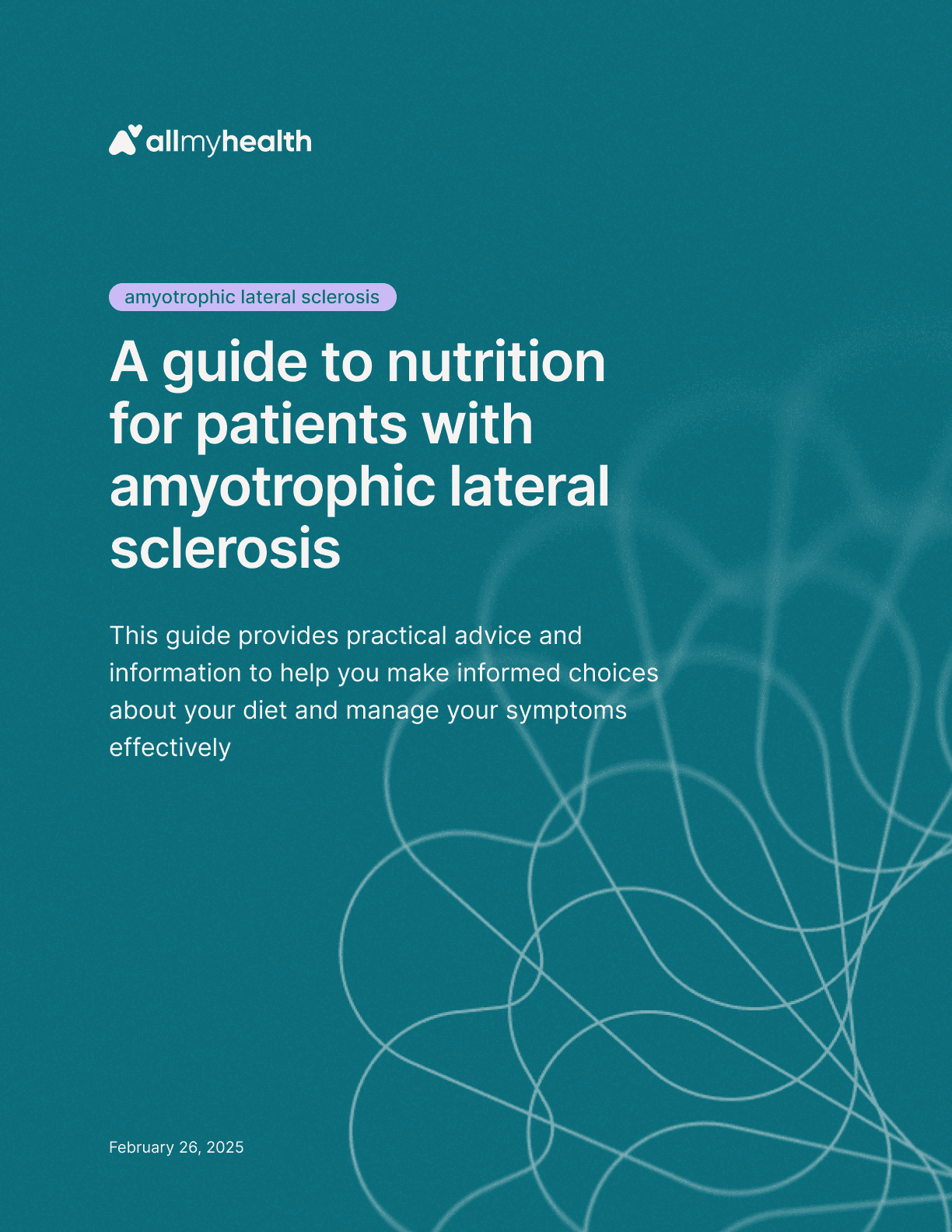
Amyotrophic lateral sclerosis
·
A guide to nutrition for patients with amyotrophic lateral sclerosis
Feb 26, 2025
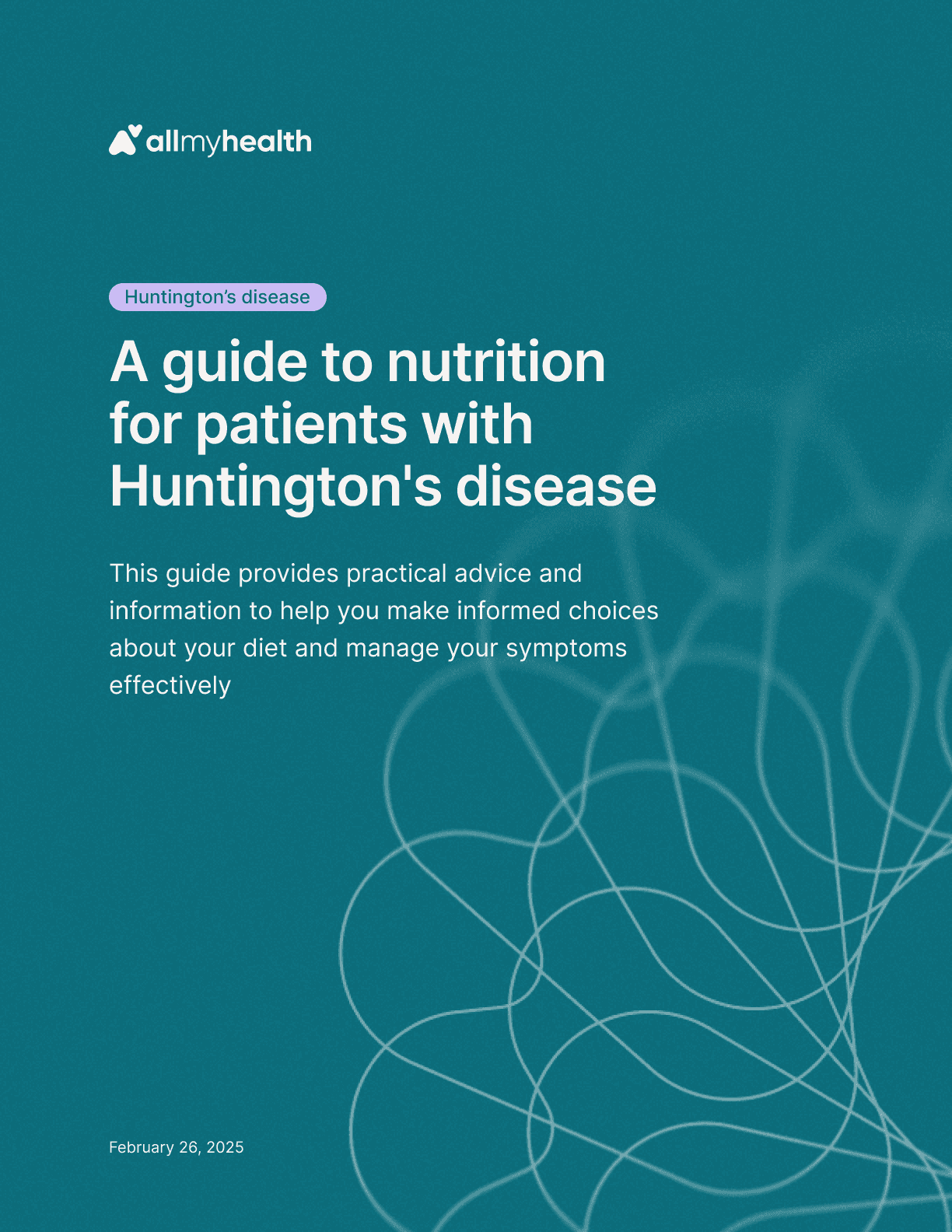
Huntington's disease
·
A guide to nutrition for patients with Huntington's disease
Feb 26, 2025

Spinal muscular atrophy
·
A guide to nutrition for patients with spinal muscular atrophy
Feb 26, 2025
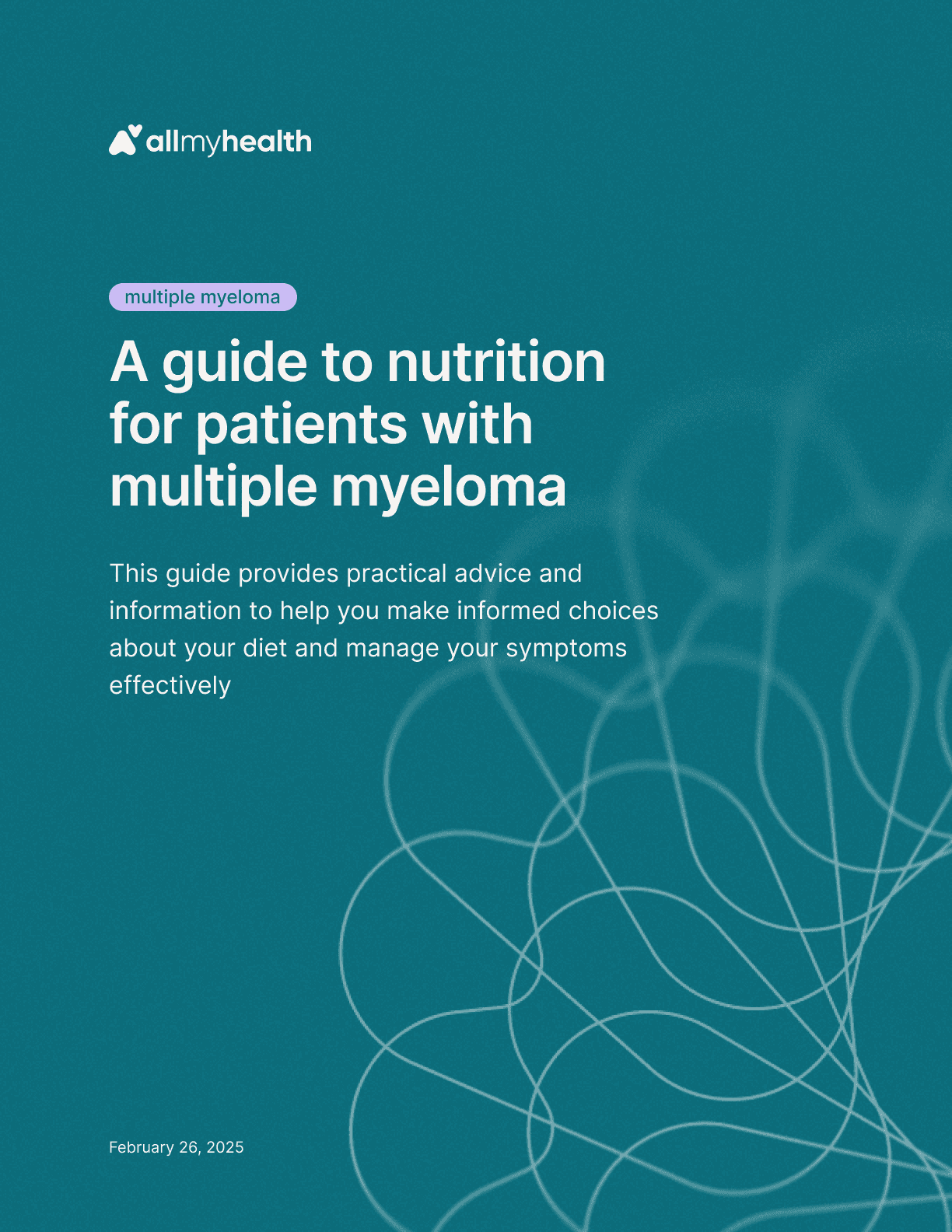
Multiple myeloma
·
A guide to nutrition for patients with multiple myeloma
Feb 26, 2025
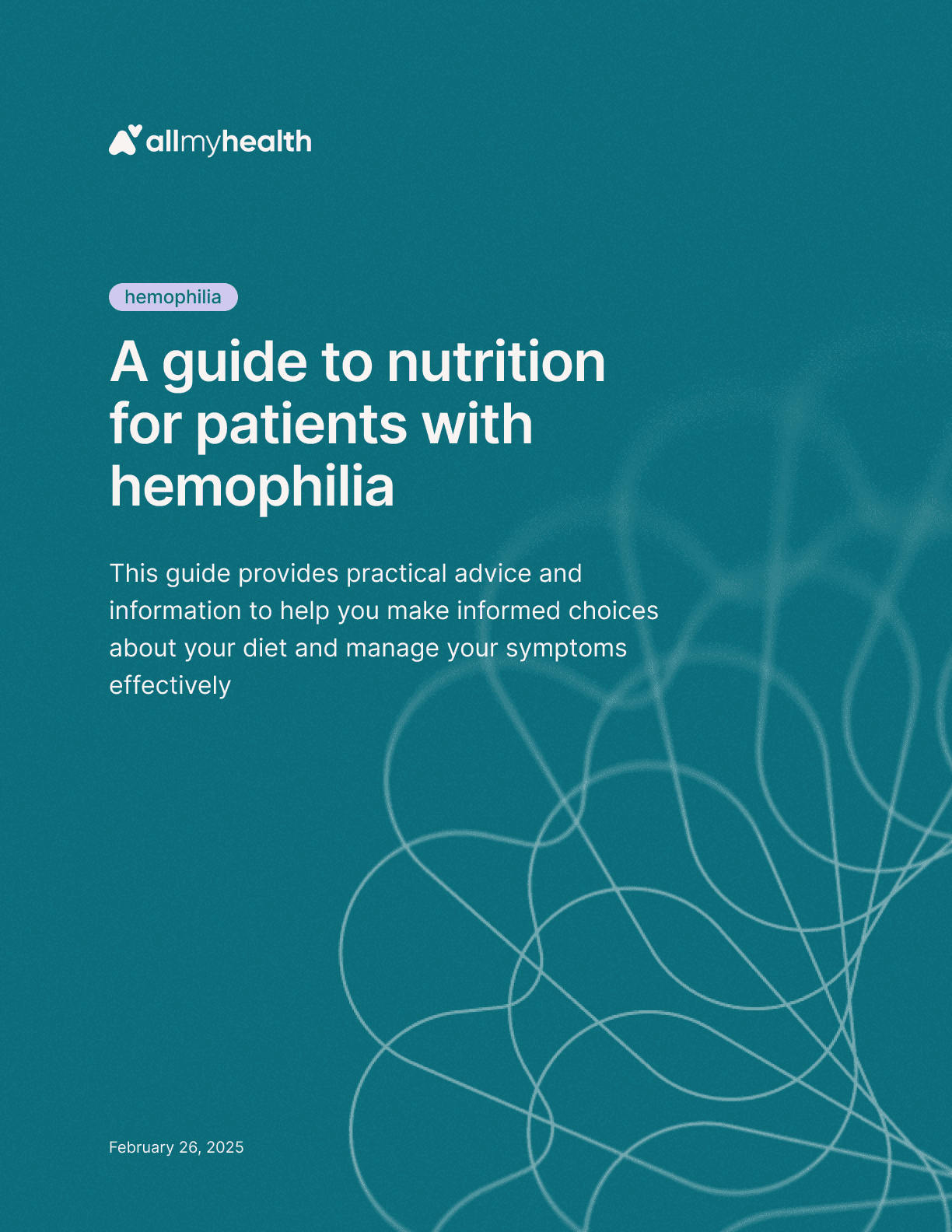
Hemophilia
·
A guide to nutrition for patients with hemophilia
Feb 26, 2025
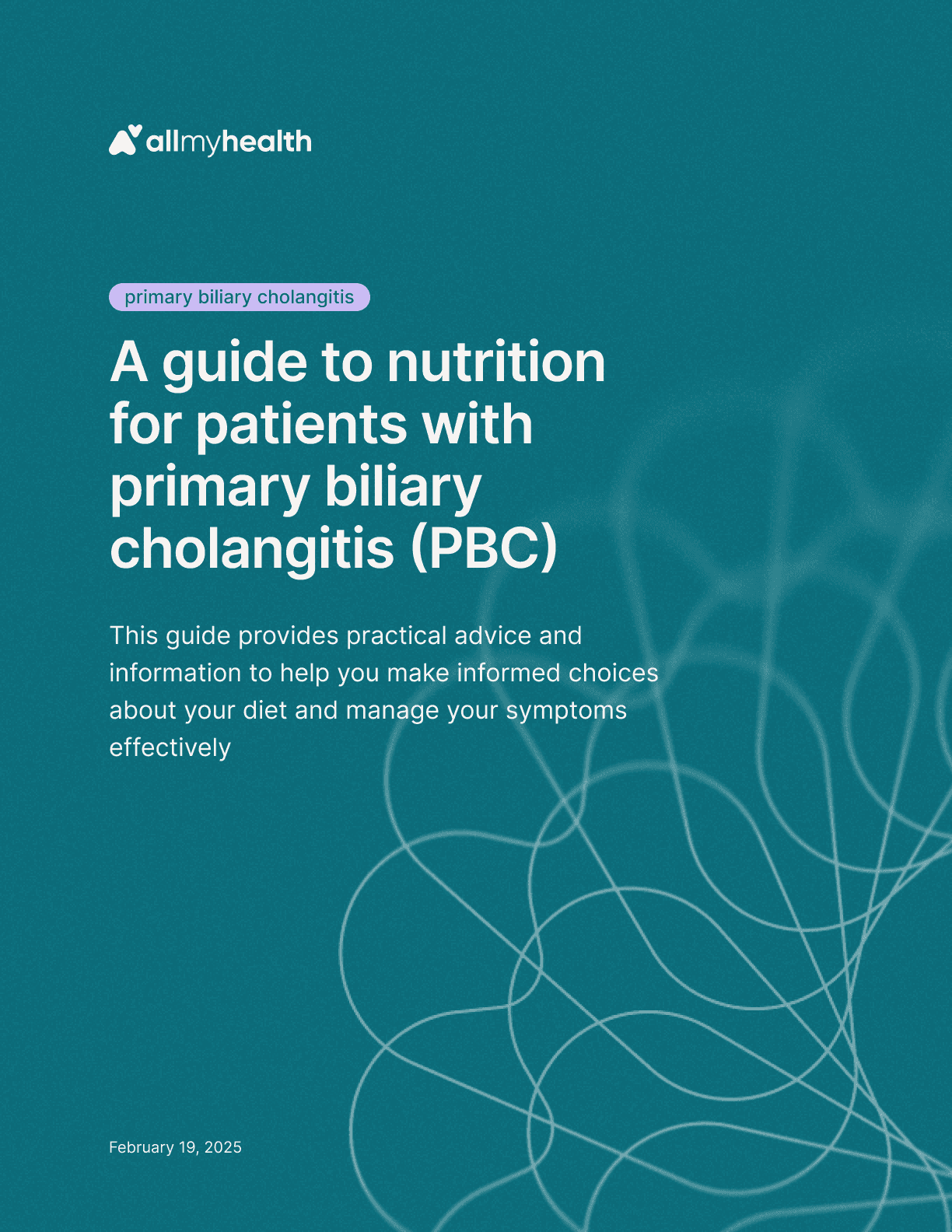
Primary biliary cholangitis
·
A guide to nutrition for patients with primary biliary cholangitis (PBC)
Feb 19, 2025
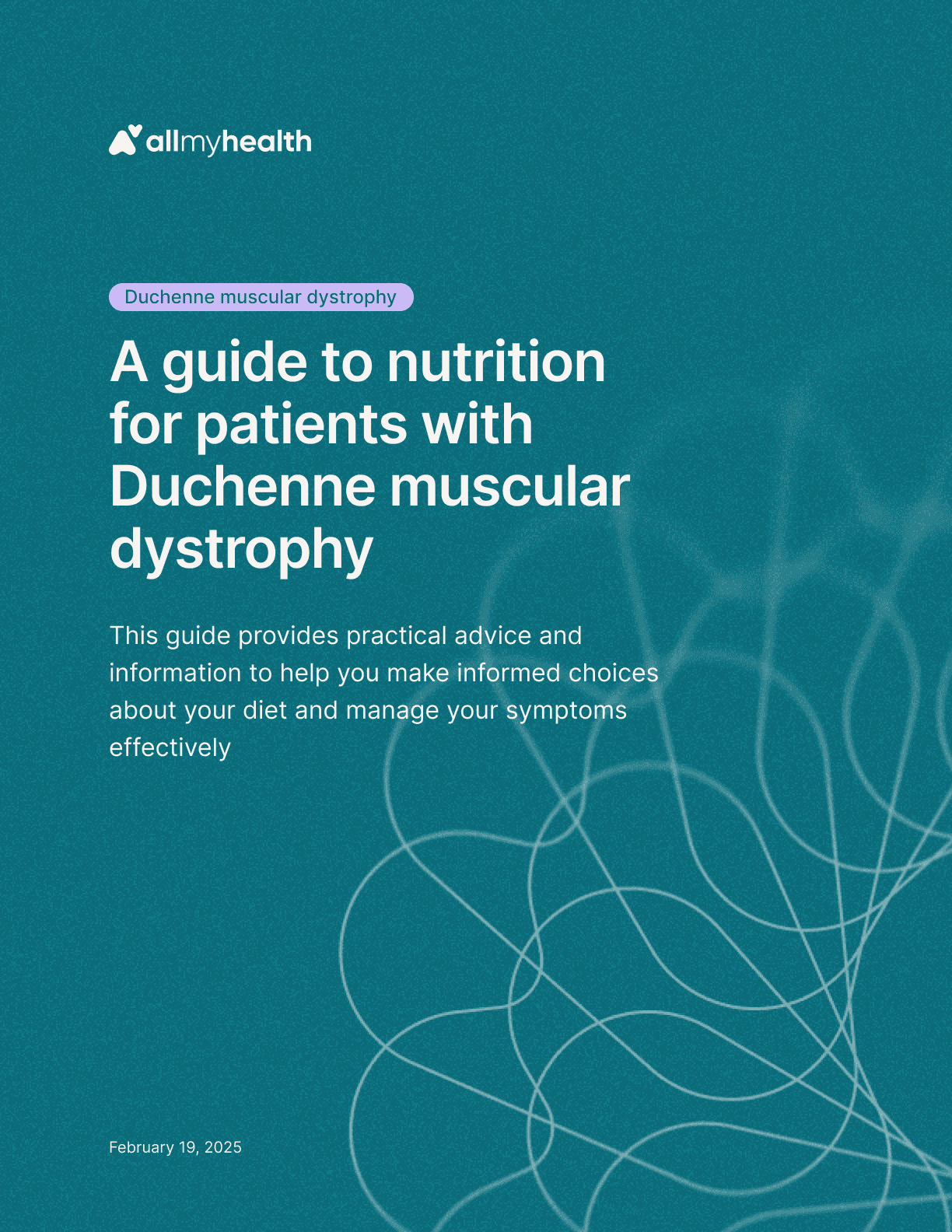
Duchenne muscular dystrophy
·
A guide to nutrition for patients with Duchenne muscular dystrophy
Feb 19, 2025
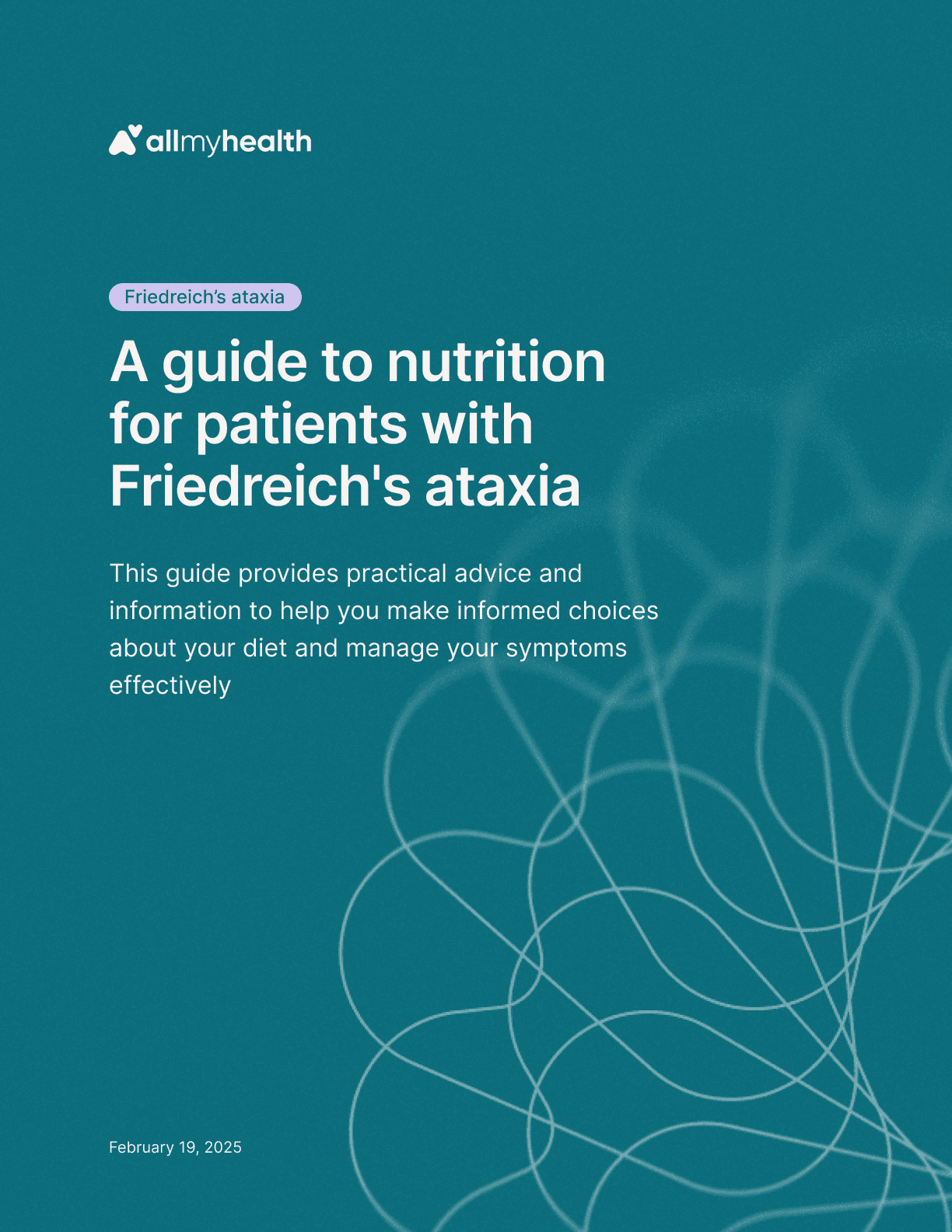
Friedreich's ataxia
·
A guide to nutrition for patients with Friedreich's ataxia
Feb 19, 2025
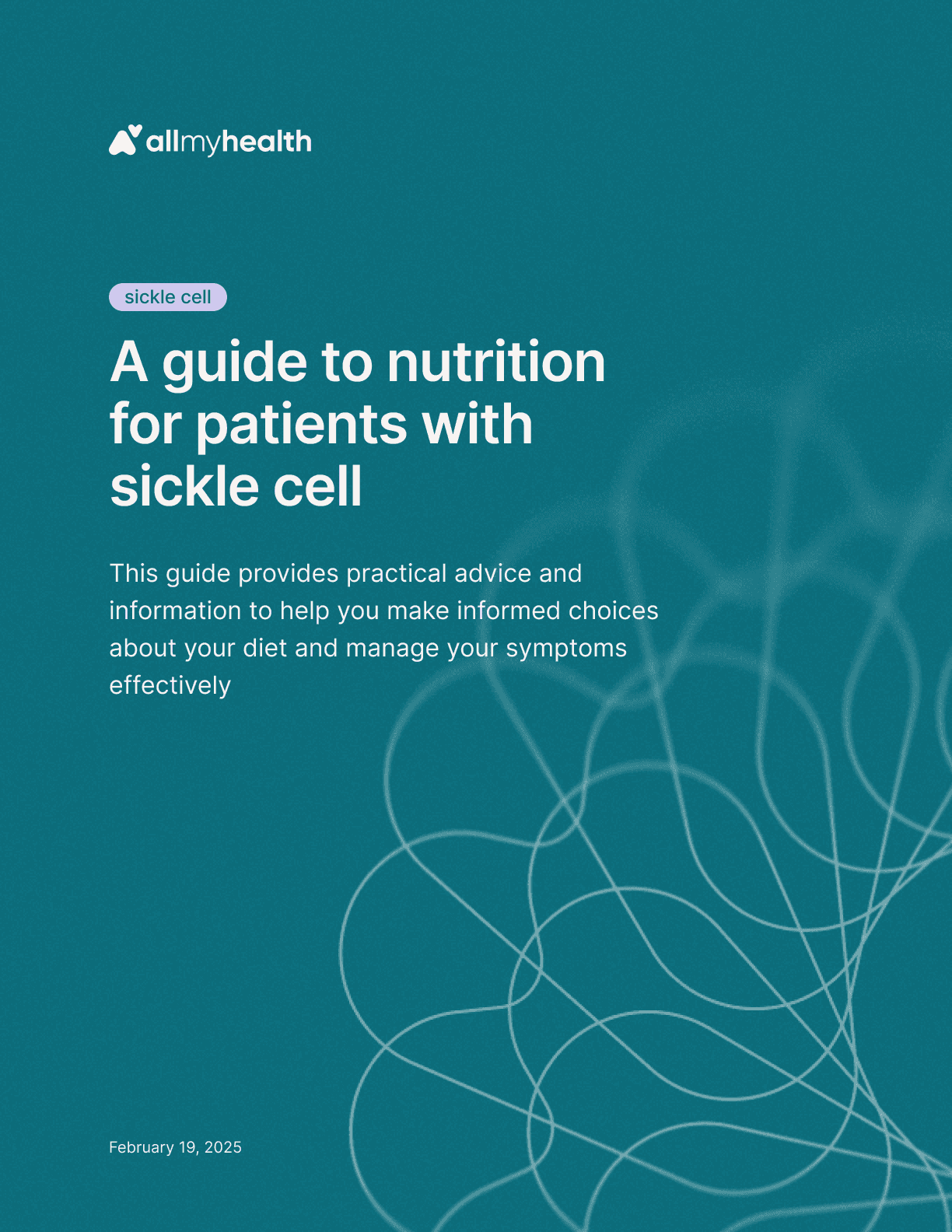
Sickle cell
·
A guide to nutrition for patients with sickle cell
Feb 19, 2025

Mantle cell lymphoma
·
A guide to nutrition for patients with mantle cell lymphoma
Feb 19, 2025
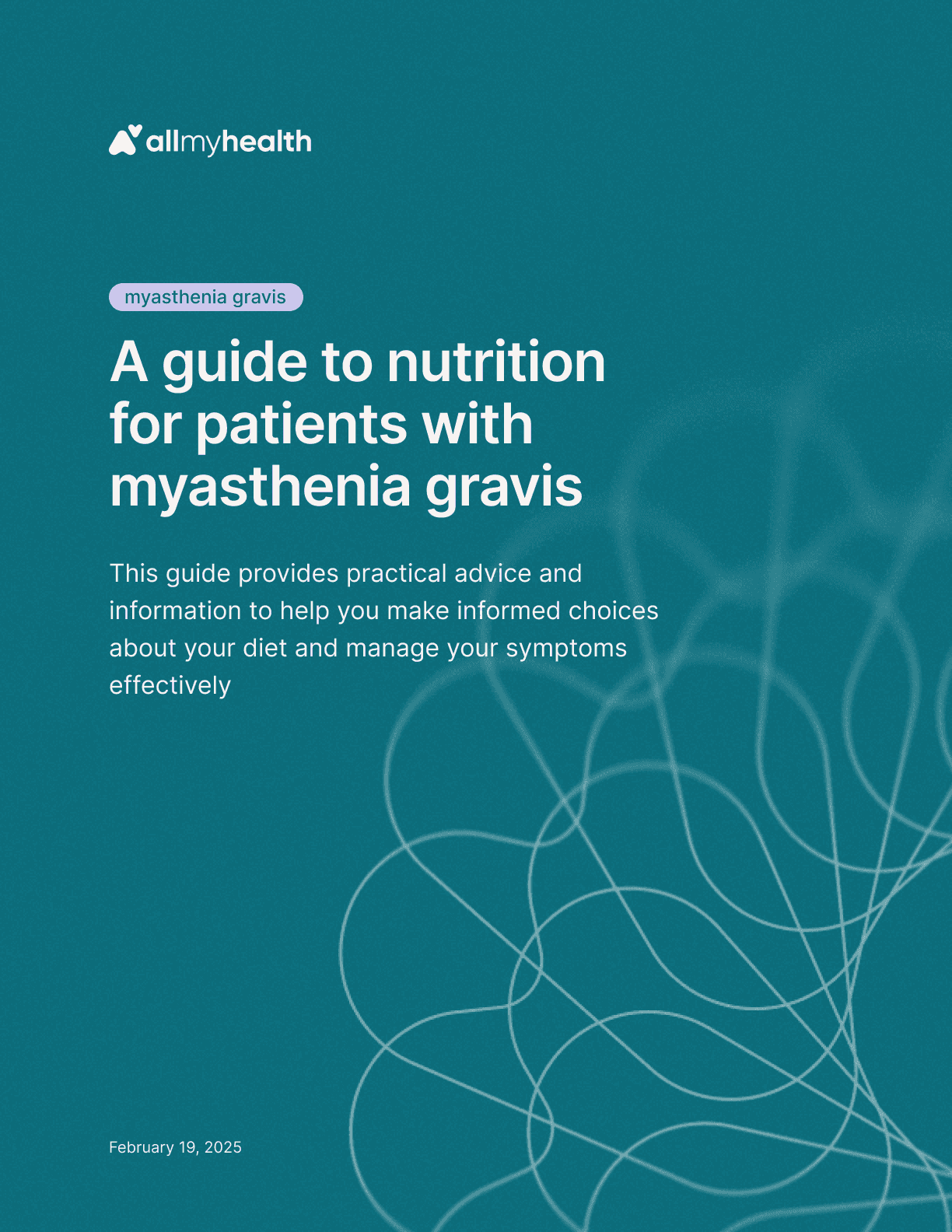
Myasthenia gravis
·
A guide to nutrition for patients with myasthenia gravis
Feb 19, 2025
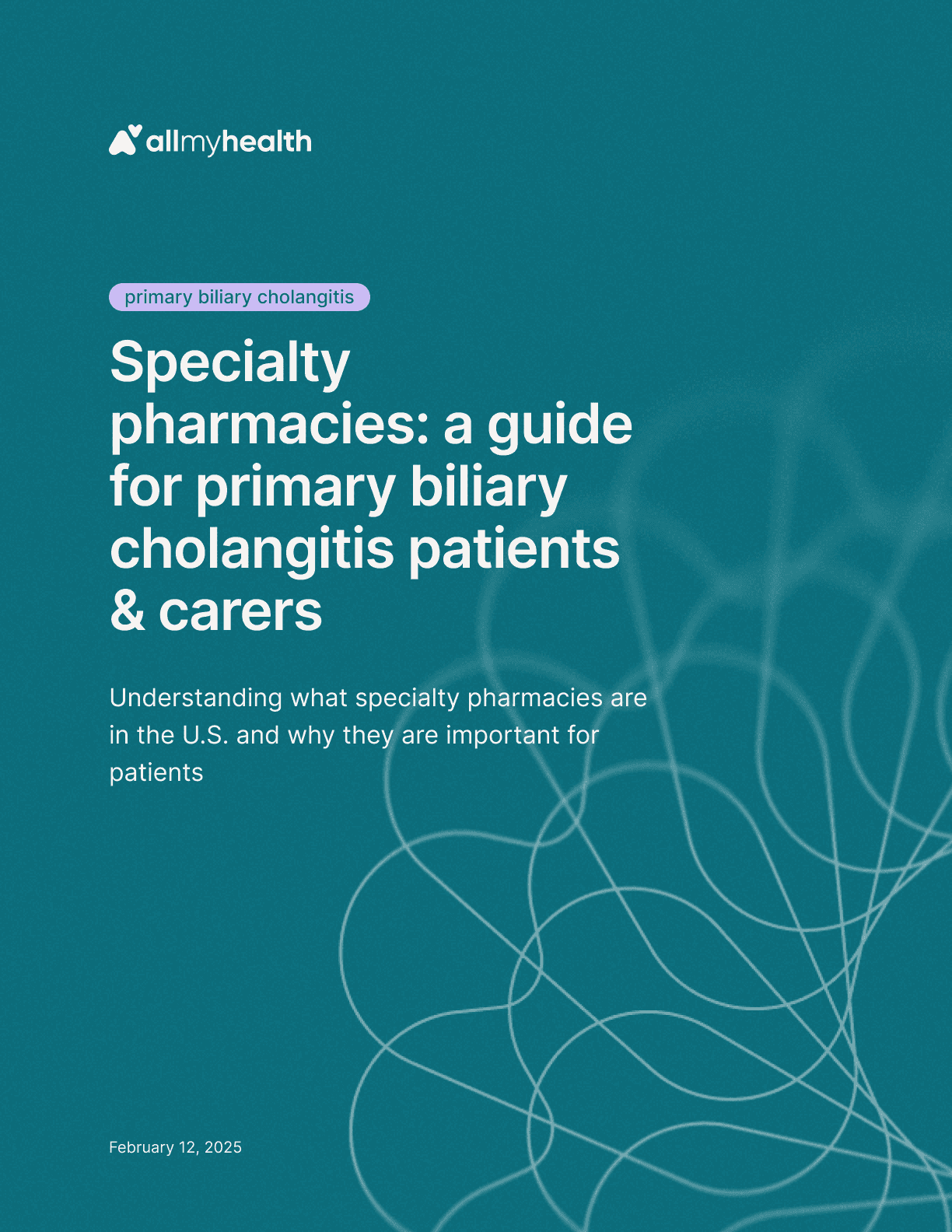
Primary biliary cholangitis
·
Specialty pharmacies: a guide for primary biliary cholangitis patients & carers
Feb 12, 2025
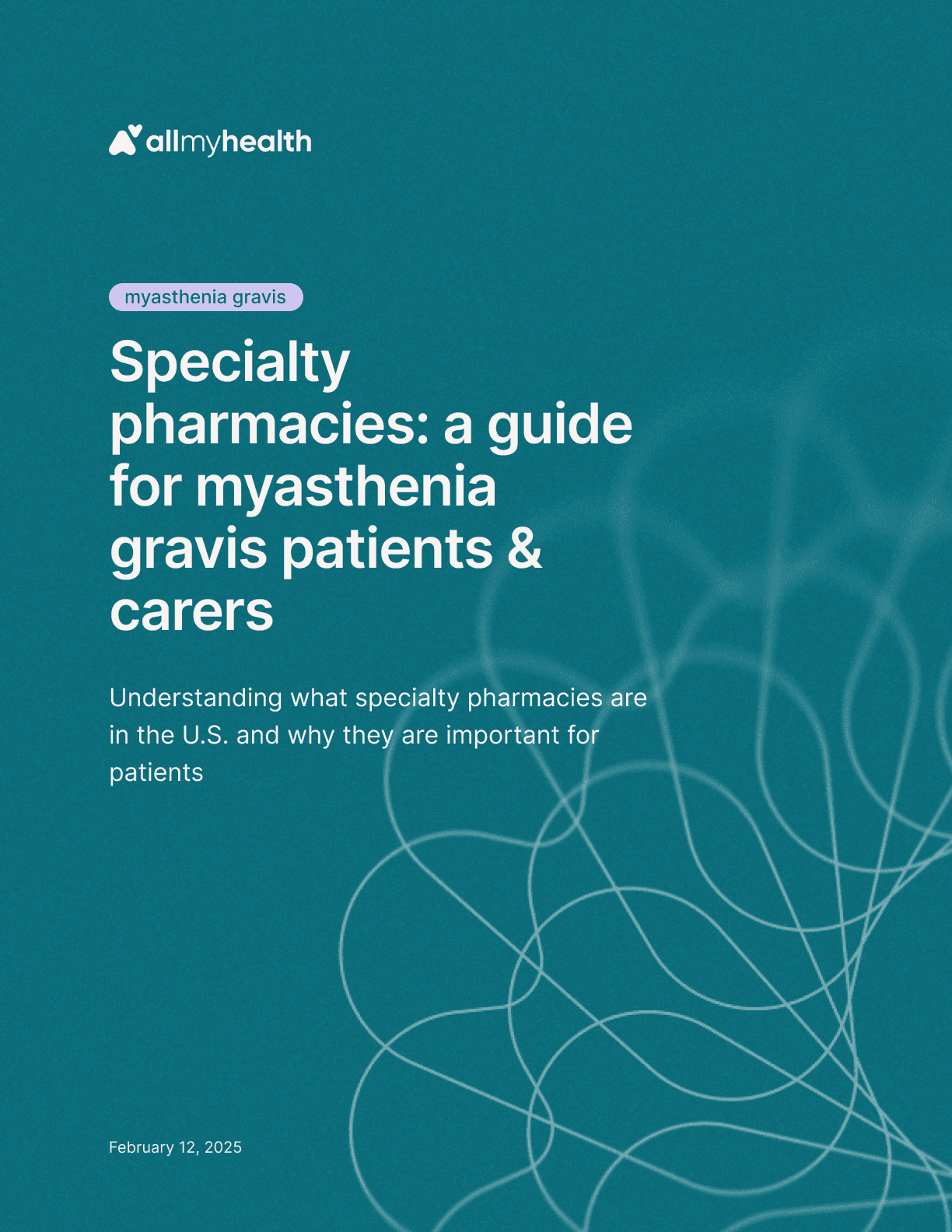
Myasthenia gravis
·
Specialty pharmacies: a guide for myasthenia gravis patients & carers
Feb 12, 2025
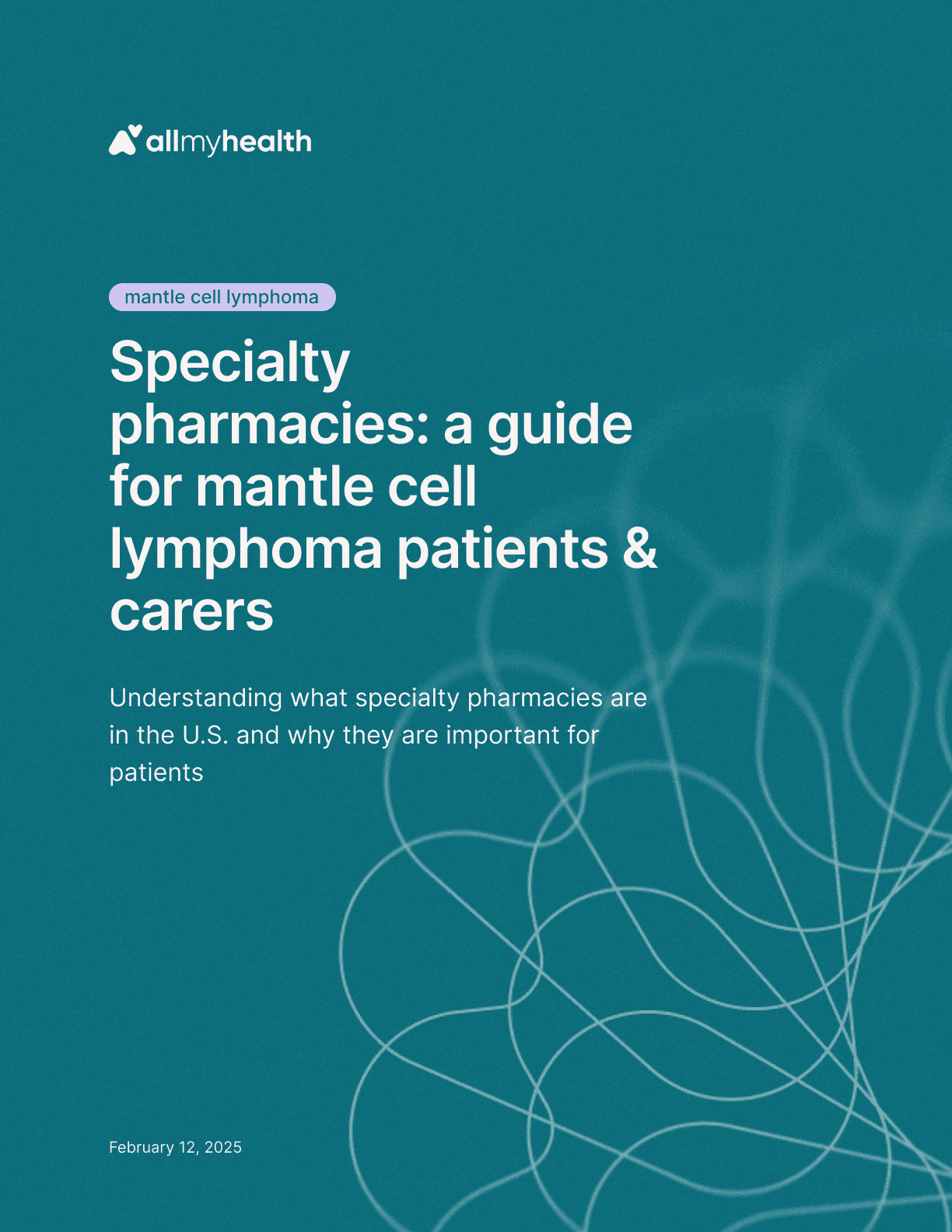
Mantle cell lymphoma
·
Specialty pharmacies: a guide for mantle cell lymphoma patients & carers
Feb 12, 2025

Friedreich's ataxia
·
Specialty pharmacies: a guide for Friedreich’s ataxia patients & carers
Feb 12, 2025
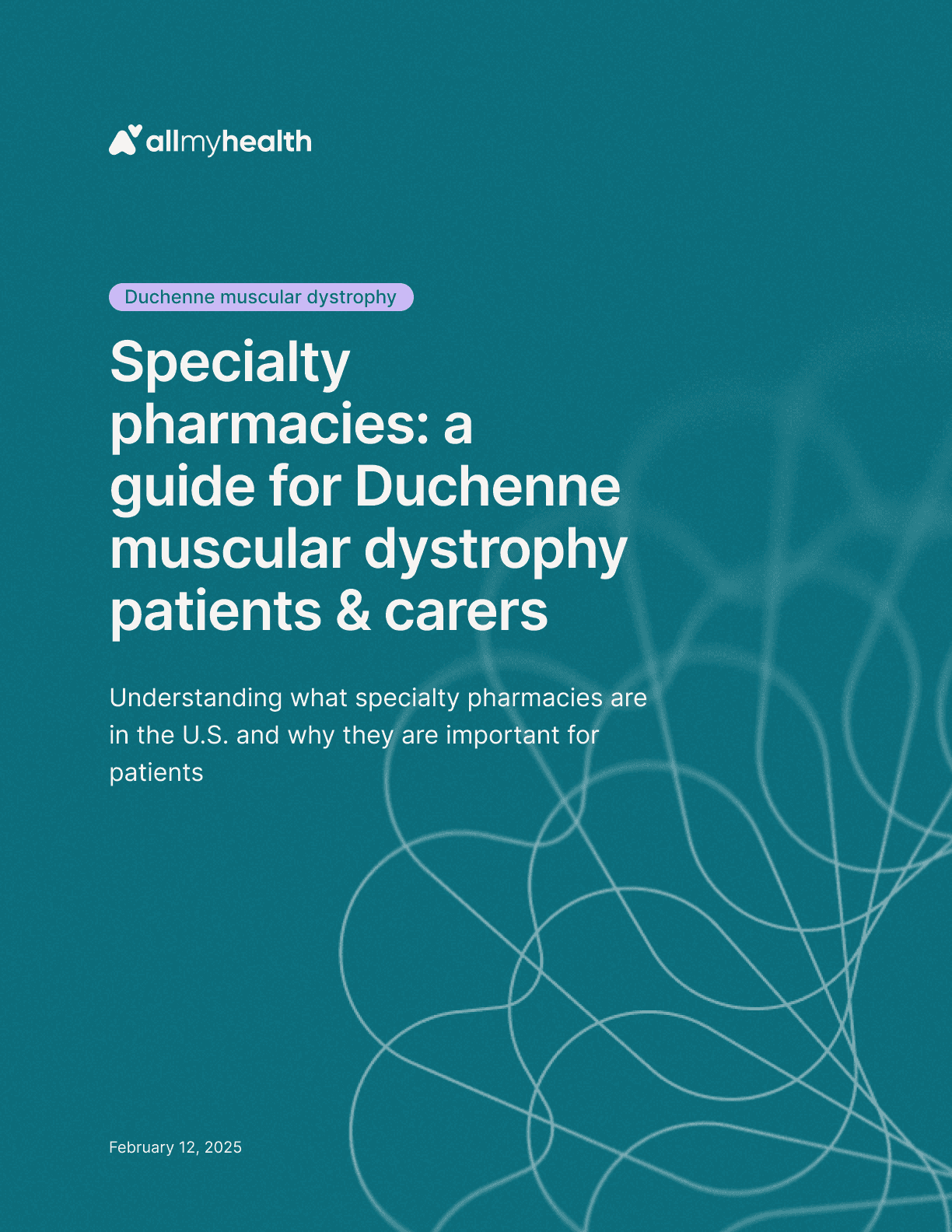
Duchenne muscular dystrophy
·
Specialty pharmacies: a guide for Duchenne muscular dystrophy patients & carers
Feb 12, 2025

Spinal muscular atrophy
·
Specialty pharmacies: a guide for SMA patients & carers
Feb 6, 2025
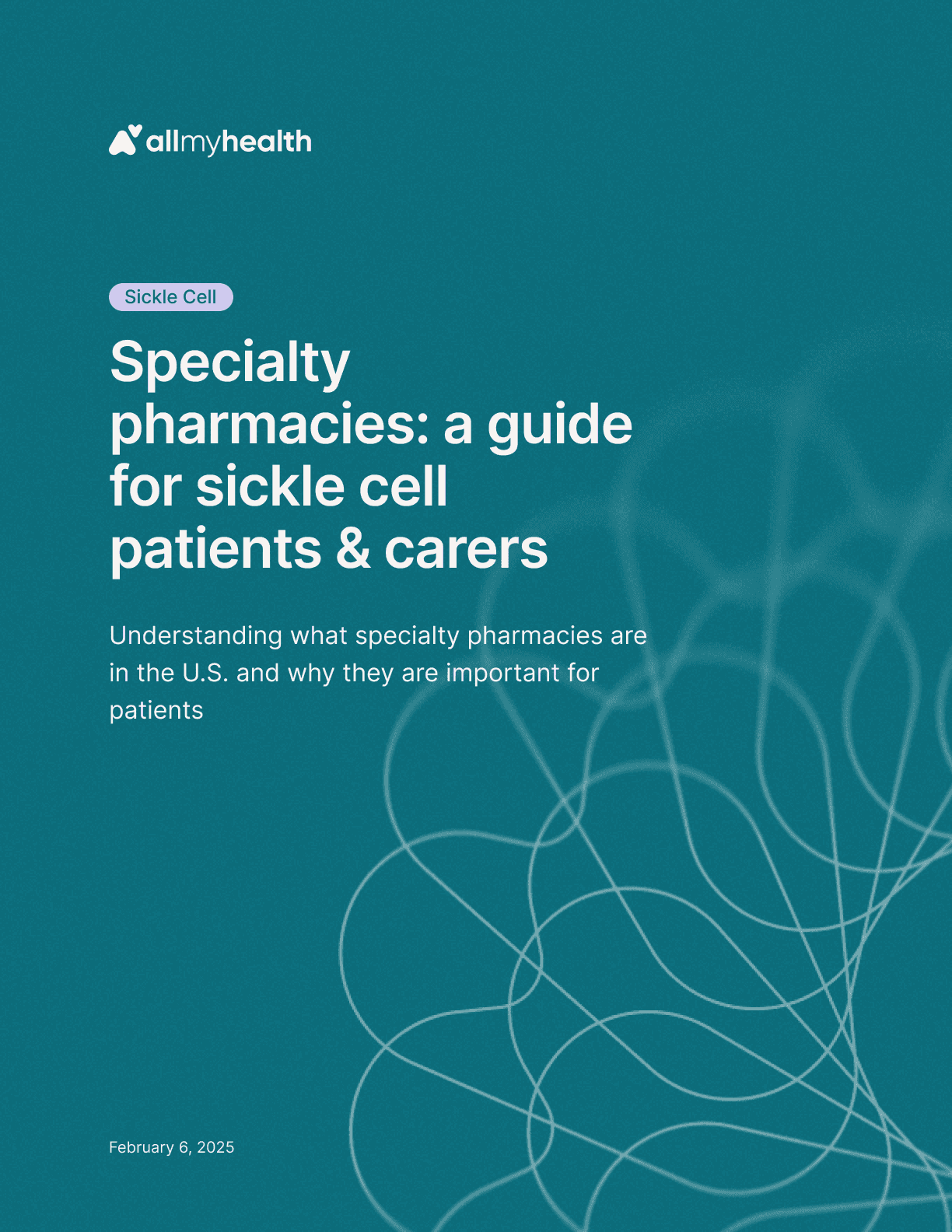
Sickle cell
·
Specialty pharmacies: a guide for sickle cell patients & carers
Feb 6, 2025
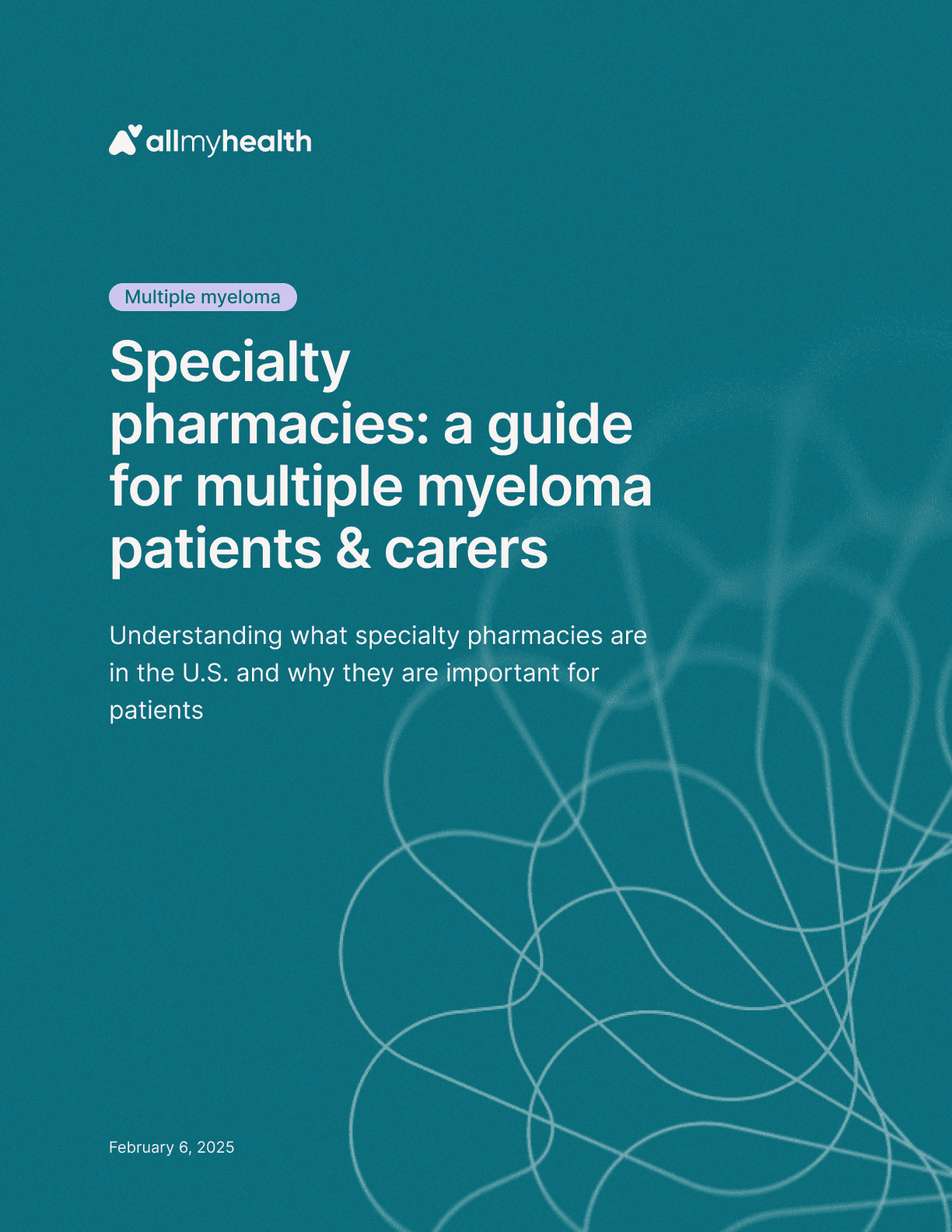
Multiple myeloma
·
Specialty pharmacies: a guide for multiple myeloma patients & carers
Feb 6, 2025
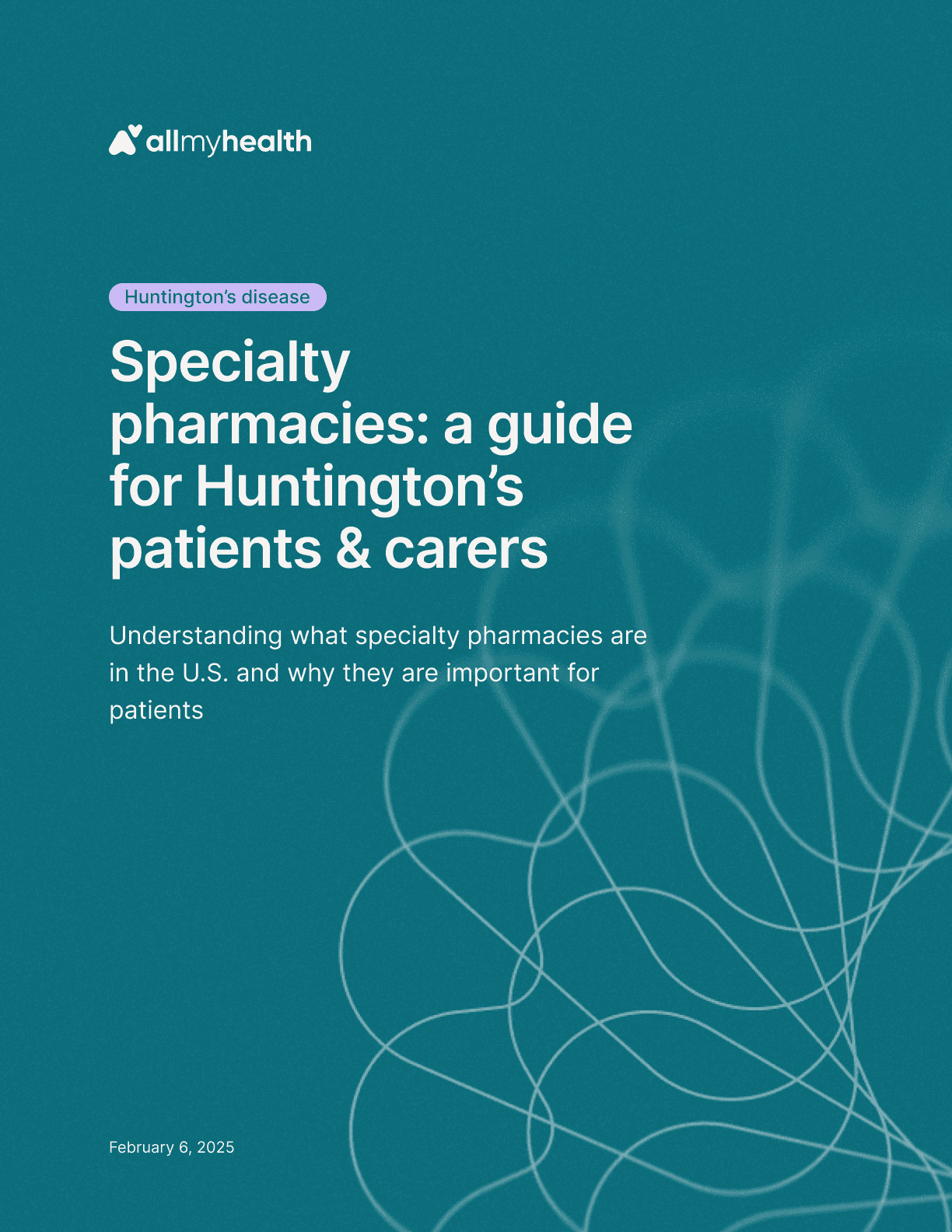
Huntington's disease
·
Specialty pharmacies: a guide for Huntington’s disease patients & carers
Feb 6, 2025
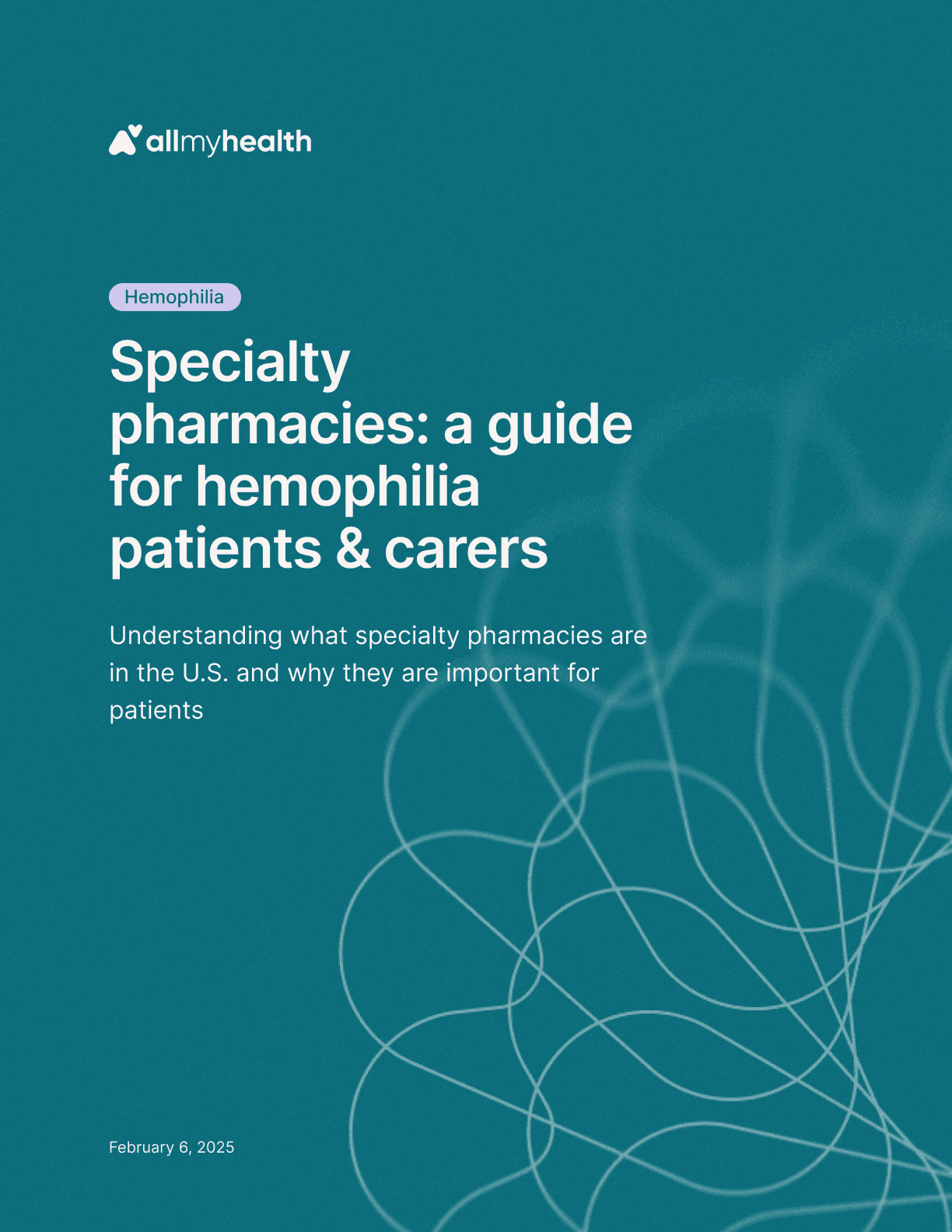
Hemophilia
·
Specialty pharmacies: a guide for hemophilia patients & carers
Feb 6, 2025

Amyotrophic lateral sclerosis
·
Specialty pharmacies: a guide for ALS patients & carers
Feb 6, 2025
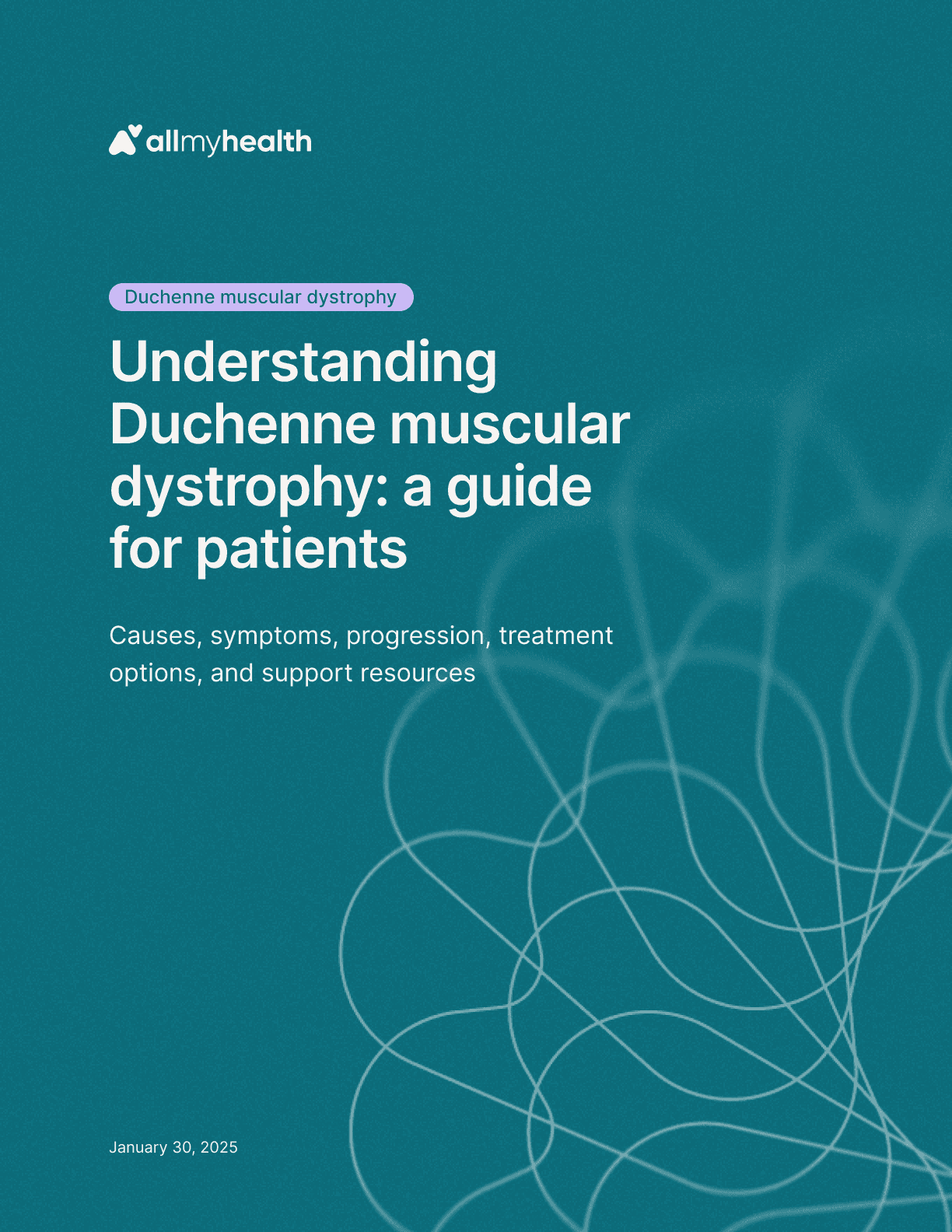
Duchenne muscular dystrophy
·
Understanding Duchenne muscular dystrophy: a guide for patients
Jan 30, 2025

Friedreich's ataxia
·
Understanding Friedreich's ataxia: a guide for patients
Jan 30, 2025

Hemophilia
·
Understanding hemophilia: a guide for patients
Jan 30, 2025
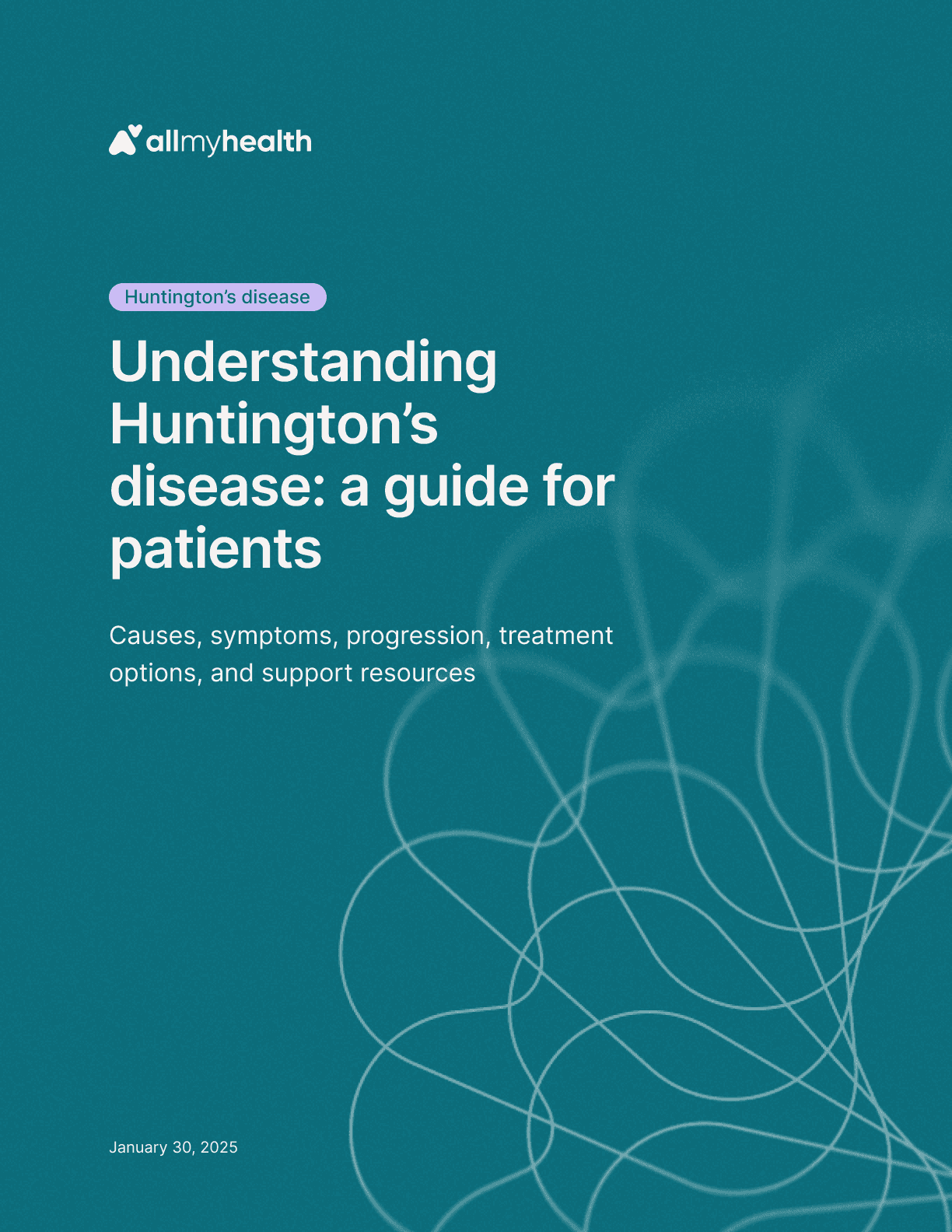
Huntington's disease
·
Understanding Huntington’s disease: a guide for patients
Jan 30, 2025
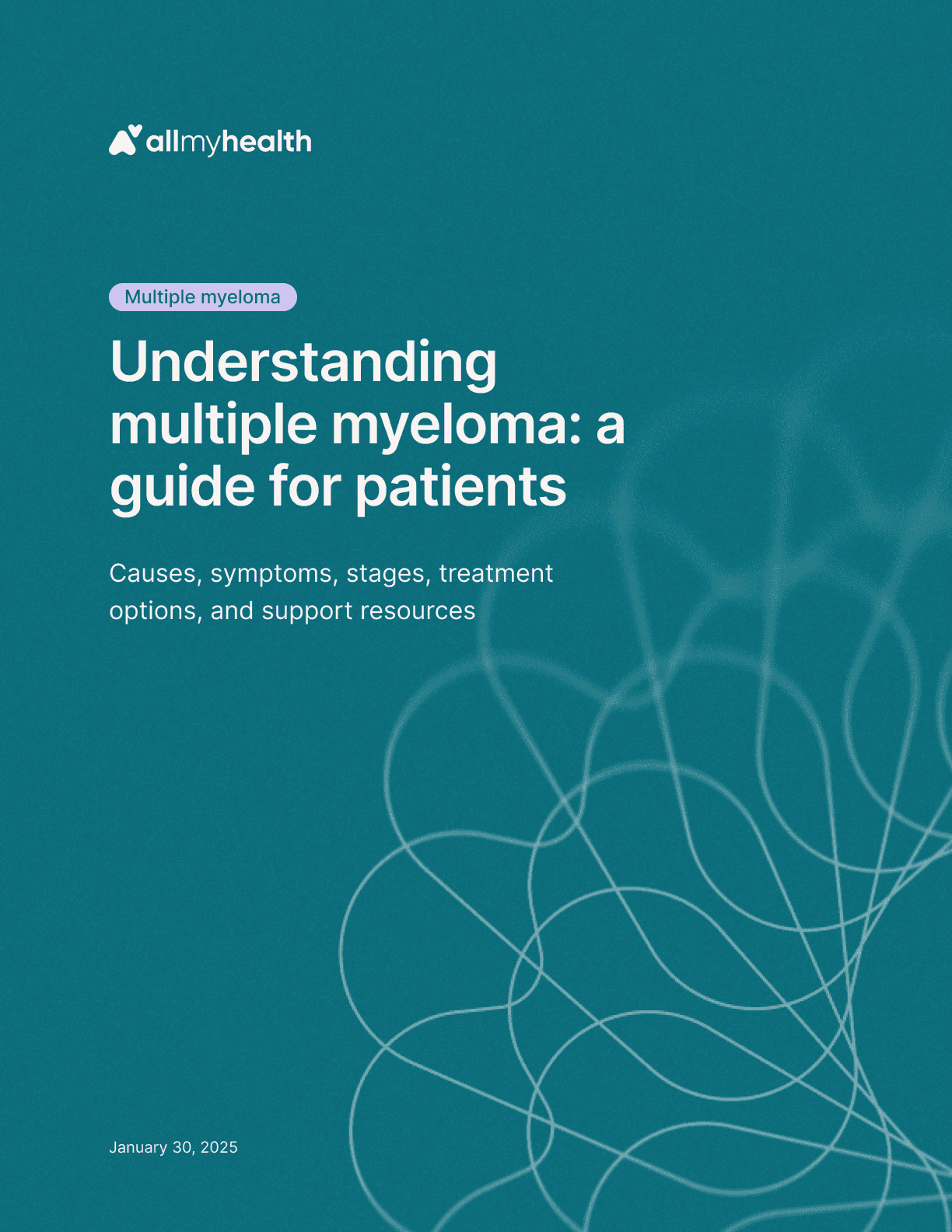
Multiple myeloma
·
Understanding multiple myeloma: a guide for patients
Jan 30, 2025

Primary biliary cholangitis
·
Understanding primary biliary cholangitis: a guide for patients
Jan 30, 2025
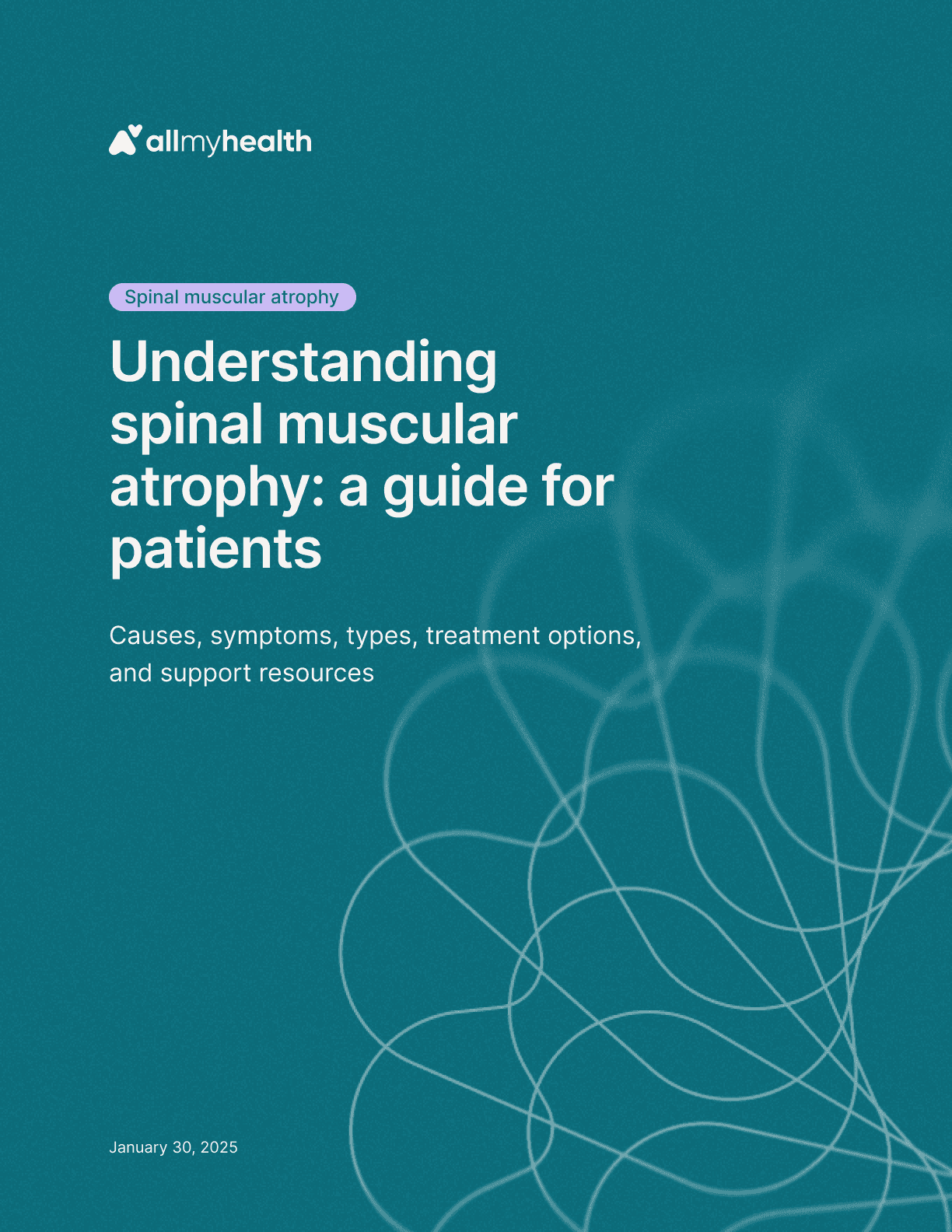
Spinal muscular atrophy
·
Understanding spinal muscular atrophy: a guide for patients
Jan 30, 2025

Amyotrophic lateral sclerosis
·
Understanding amyotrophic lateral sclerosis: a guide for patients
Jan 23, 2025
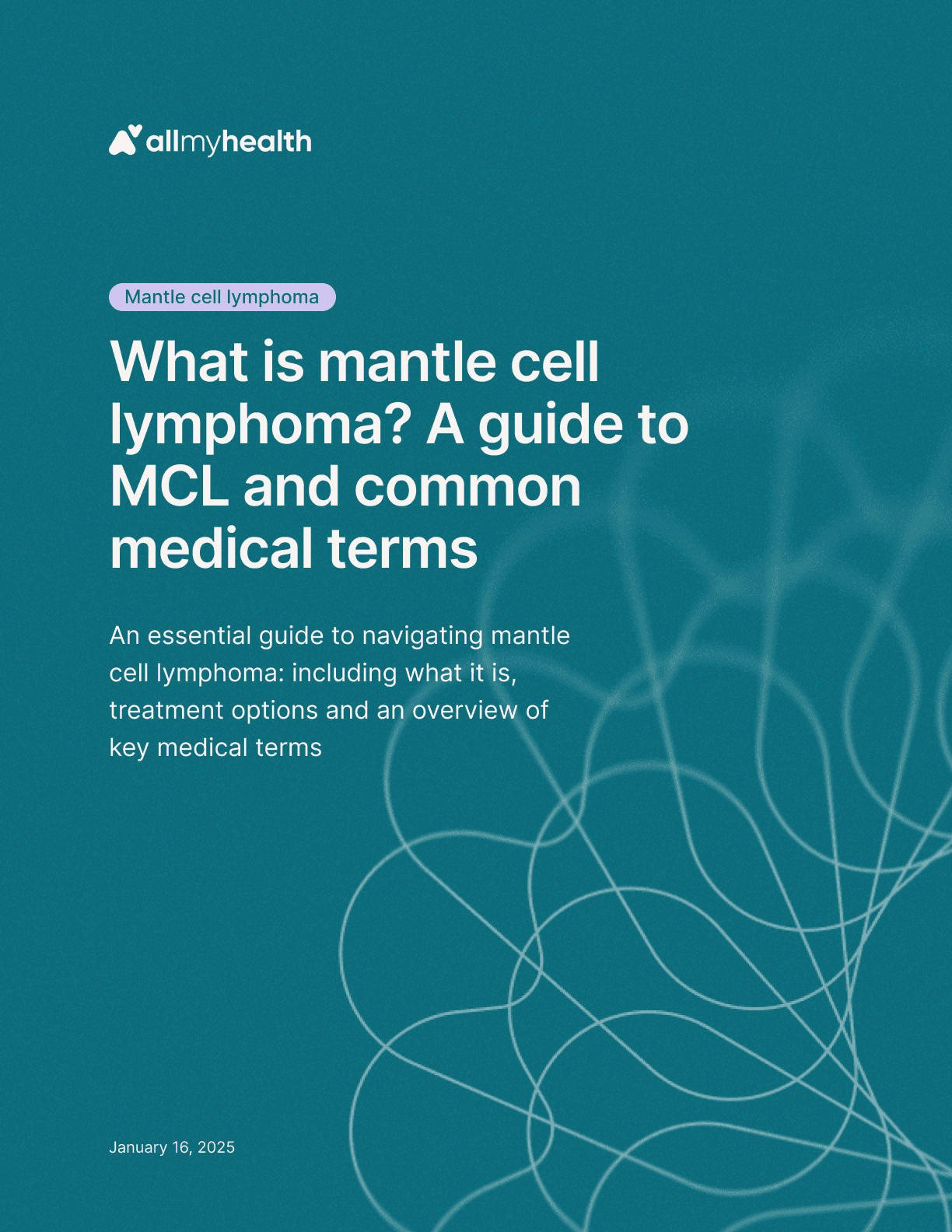
Mantle cell lymphoma
·
What is mantle cell lymphoma? A guide to MCL and common medical terms
Jan 23, 2025
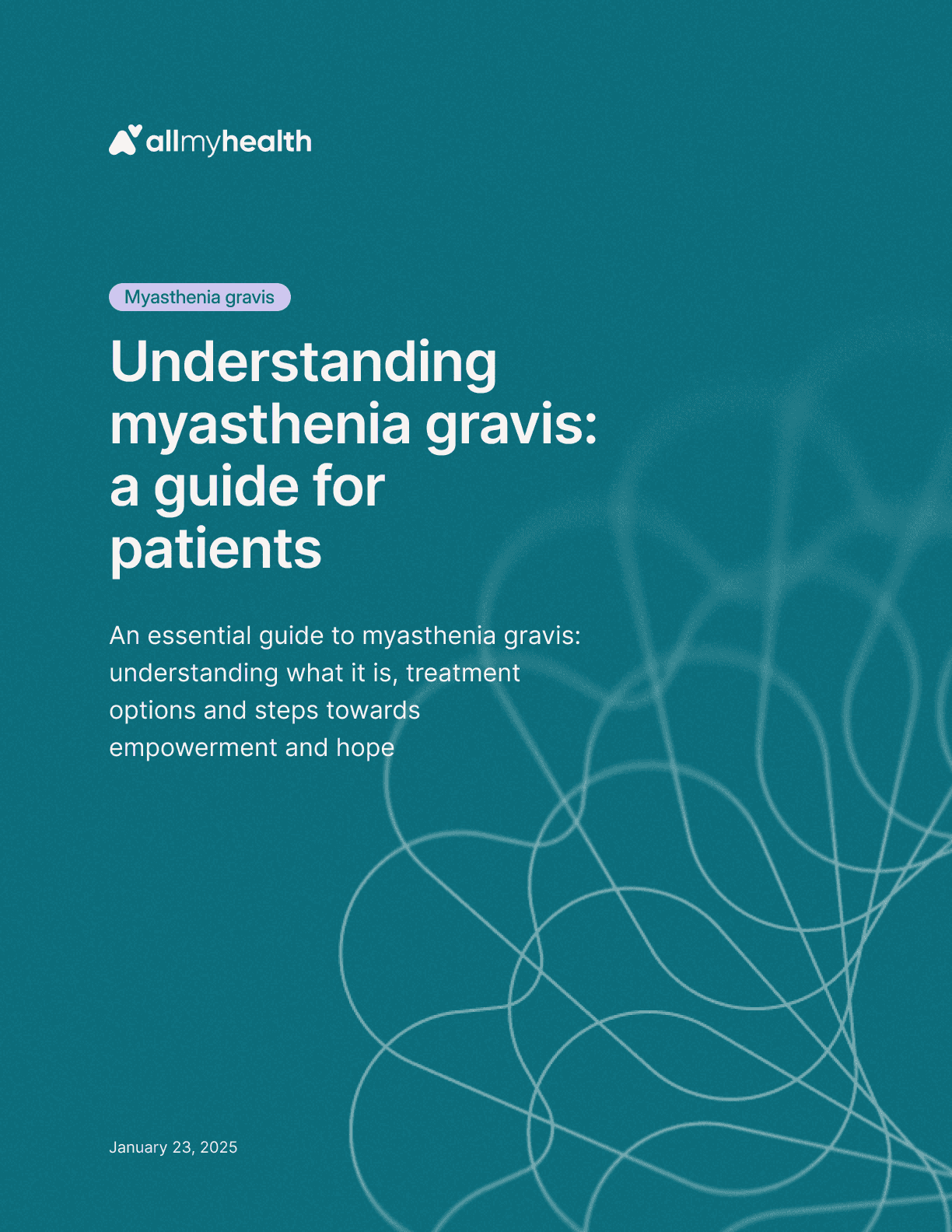
Myasthenia gravis
·
Understanding myasthenia gravis: a guide for patients
Jan 23, 2025
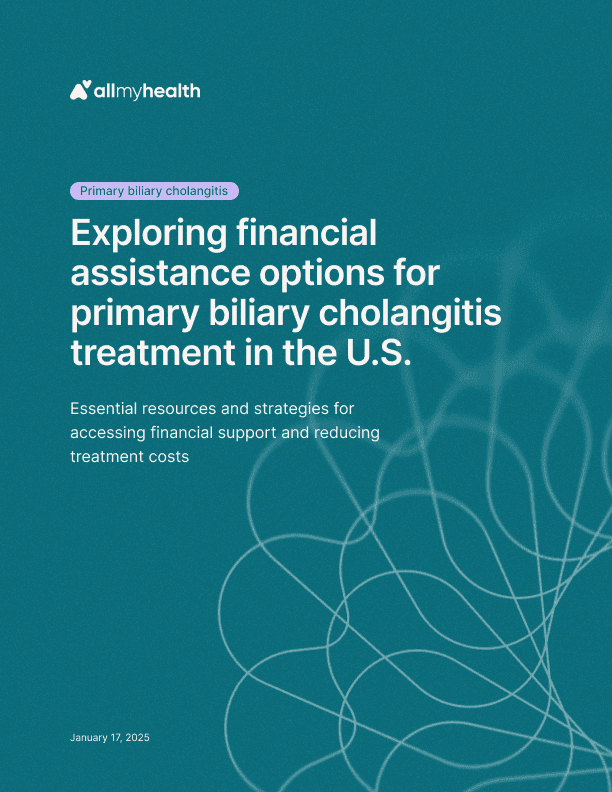
Primary biliary cholangitis
·
Exploring financial assistance options for primary biliary cholangitis treatment in the U.S.
Jan 17, 2025
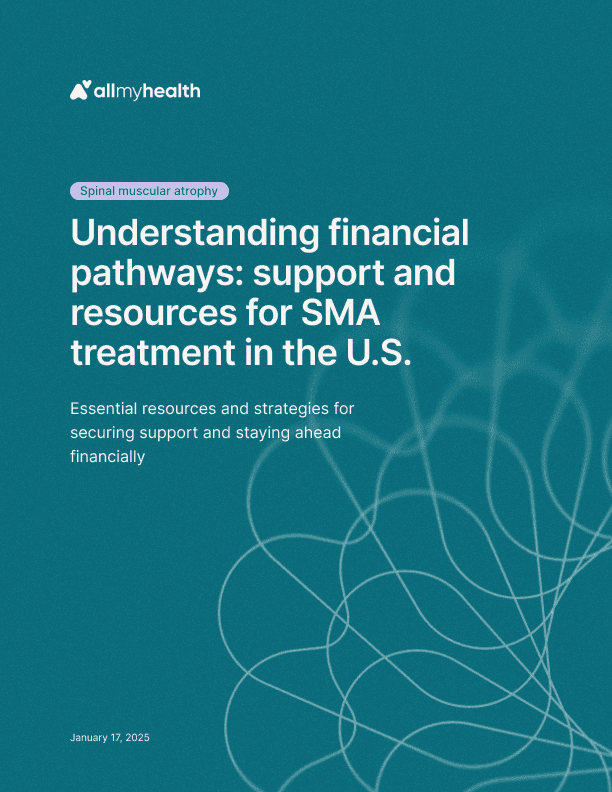
Spinal muscular atrophy
·
Understanding financial pathways: support and resources for SMA treatment in the U.S.
Jan 17, 2025

Duchenne muscular dystrophy
·
Financial strategies for muscular dystrophy in the U.S.
Jan 17, 2025

Hemophilia
·
Navigating financial assistance for hemophilia treatment in the U.S.
Jan 17, 2025
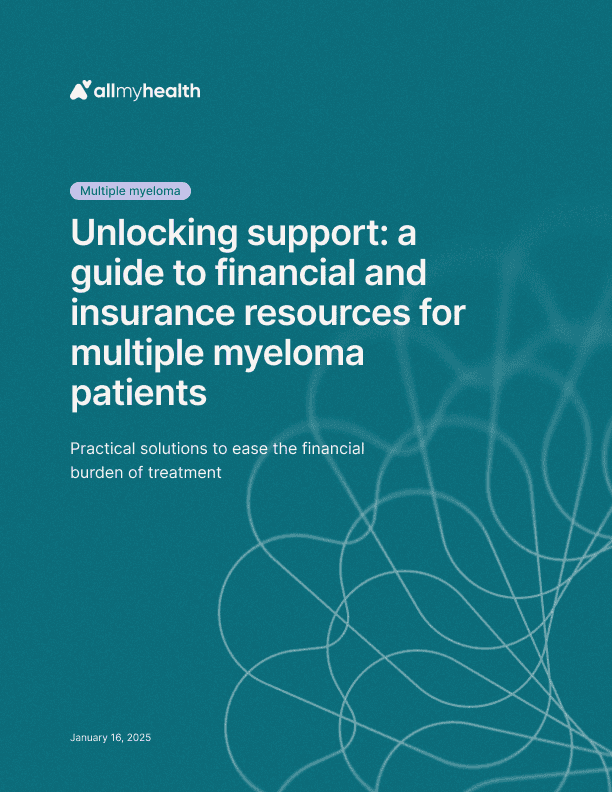
Multiple myeloma
·
Unlocking support: a guide to financial and insurance resources for multiple myeloma patients
Jan 17, 2025

Friedreich's ataxia
·
Navigating Friedreich’s ataxia in the U.S.: a practical guide to support and financial planning
Jan 17, 2025
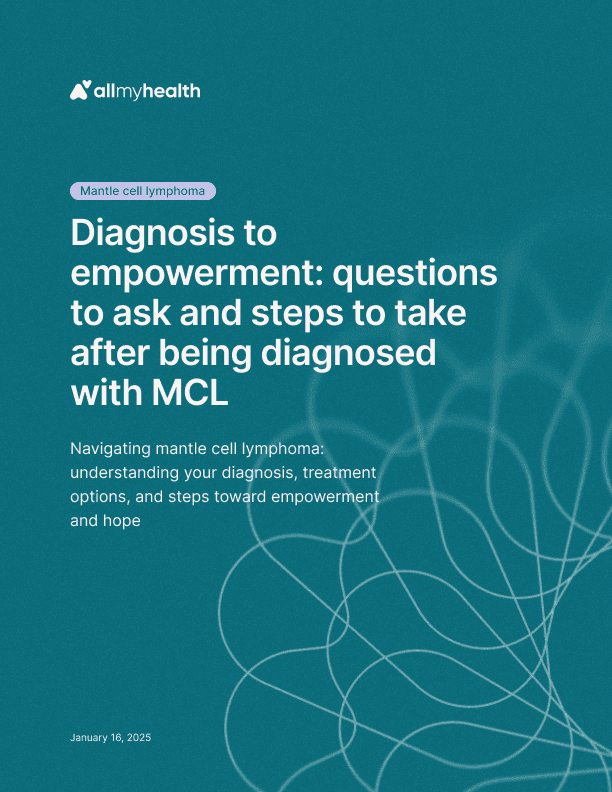
Mantle cell lymphoma
·
Diagnosis to empowerment: questions to ask and steps to take after being diagnosed with MCL
Jan 16, 2025
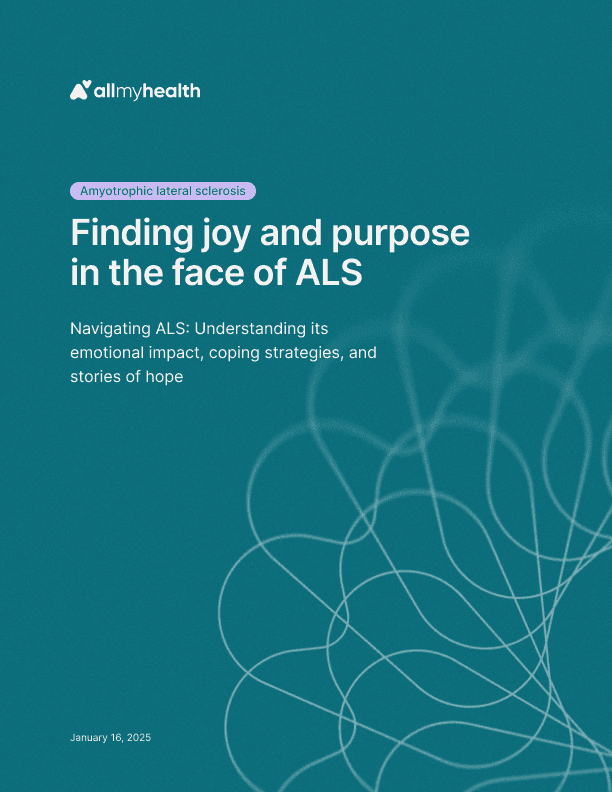
Amyotrophic lateral sclerosis
·
Finding joy and purpose in the face of ALS
Jan 16, 2025
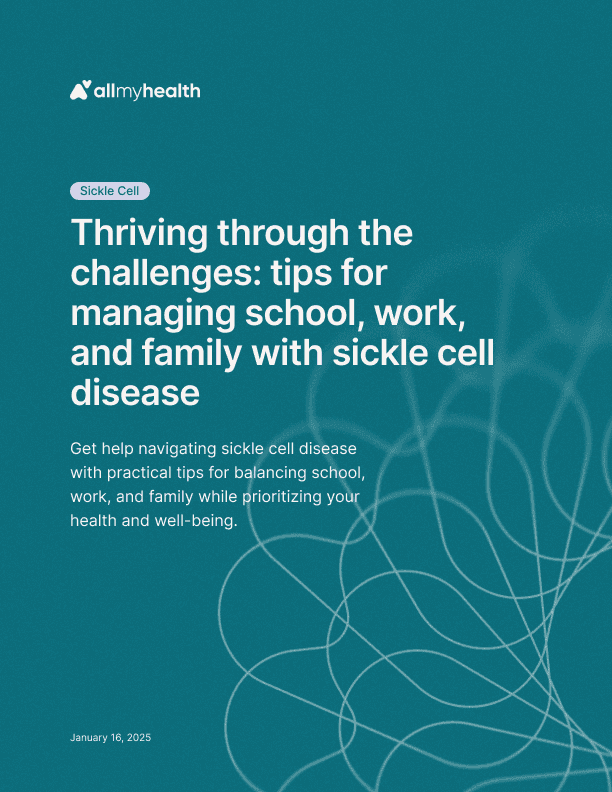
Sickle cell
·
Thriving through the challenges: tips for managing school, work, and family with sickle cell disease
Jan 16, 2025

Myasthenia gravis
·
Financial strategies for living with myasthenia gravis in the U.S.: a guide to long-term planning
Jan 16, 2025